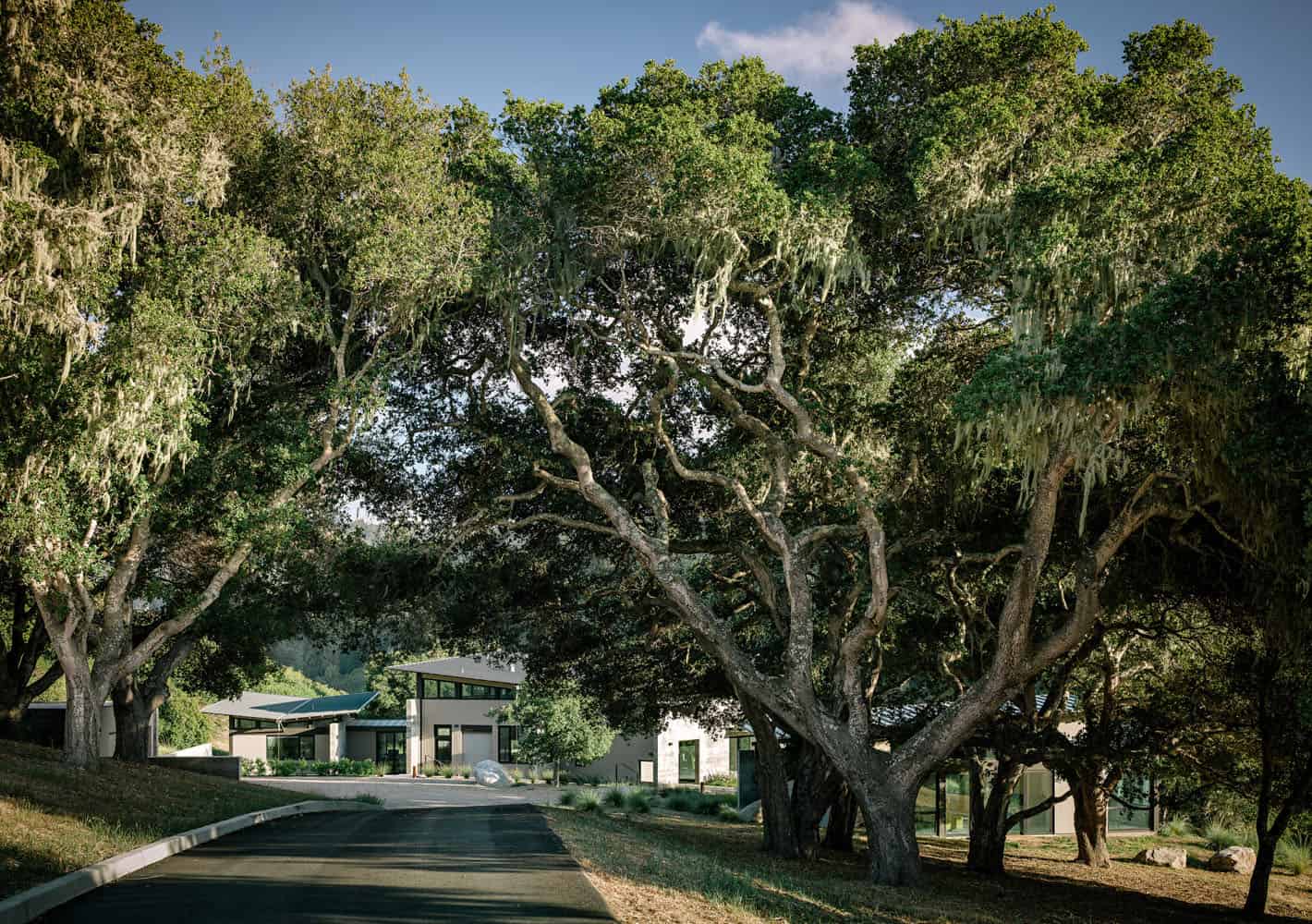
Feldman Architecture has designed this eco-friendly retreat for a couple of empty nesters in the Santa Lucia Preserve, a 20,000-acre nature preserve nestled in the coastal foothills just minutes from Carmel-by-the-Sea, California. The homeowners spent two years looking for their idyllic piece of land — flat enough to accommodate single-level living while also being surrounded by natural beauty.
The goal of this project was to make this a weekend retreat and eventual retirement home where they could also host visits from their grown children. In the initial meeting with the architects, the owners expressed their vision of butterflies alighting on the meadow site — the inspiration for the design. They also wanted indoor-outdoor living with clean lines and a modern aesthetic, along with separate spaces for guests.
DESIGN DETAILS: ARCHITECT Feldman Architecture INTERIOR DESIGN Feldman Architecture CONTRACTOR Groza Construction LIGHTING DESIGN Kim Cladas Lighting Design LANDSCAPE Ground Studio Landscape Architecture ENGINEER Sheerline Structural Engineering AUDIO VISUAL MetroEighteen CABINETRY, STAIR TREADS, AND CUSTOM FURNITURE Commercial Woodworking
Nestled lightly on this five-acre property, the house is divided into three pavilions totaling 2,900 square feet. They are topped by expressive butterfly roofs. Each pavilion features a separate function: the central pavilion encompasses the main living, dining, and kitchen spaces, while two other pavilions provide for sleeping, bathing, and relaxing. The structures are modest in size, yet each expands into an outdoor room that opens up to sweeping views of the canyon below and hills above.
Beyond poetic gesture, the butterfly roofs bring in views of the surrounding hills, expand the main living spaces into the outdoors and also harvest rainwater. Water, an increasingly limited resource, is celebrated throughout the design. Each roof funnels water to a rain chain fountain and into landscape collection pools, which then gather in cisterns where it is stored and used to irrigate the landscape.
The main entrance of the pavilion features a pivoting glass door from Fleetwood. The staircase leads to a media loft. Soaring ceilings are covered in low-cost plywood sheets.
The neutral palette of the house—concrete floors and walls, large glass openings, plywood ceilings, and steel structure—flow from indoors to outdoors. The ten-inch thick, board-formed concrete walls, concrete flooring, and large expanses of glass act as a heat sink—absorbing heat from the sunlight all day and releasing the heat at night. Additional heat sources include radiant heat flooring and gas stoves in the living room and guest pavilion.
Suspended above the dining table, a Big Bang fixture from Foscarini. The dining chairs are from Ligne Roset.
What We Love: This eco-friendly retreat provides three distinct structures for living, sleeping, and accomodating overnight guests. Surrounded by a beautiful nature preserve, the architects did a fabulous job of connecting indoor spaces with the outdoors to take advantage of this site. Low-maintenance materials and sustainable design features make this dwelling idyllic for daily living and entertaining.
Tell Us: Would this be your idea of the ultimate retirement home? Let us know why or why not in the Comments below!
Note: Take a look at another amazing home tour that we have featured here on One Kindesign from the portfolio of the architects of this home: An airy woodland retreat nestled in Carmel’s Santa Lucia Preserve.
In the living area, a sofa by Antonio Citterio and a Metropolitan chair and ottoman — all sourced from B&B Italia.
Accordion-like doors from NanaWall span the living and dining rooms, providing fresh coastal breezes.
The house uses little energy as a result of extensive daylighting and passive thermal strategies. A large solar array located out-of-sight provides much of the energy that is used.
In the bathroom, a custom vanity holds a Lacava sink, while the tub is AquaStone from Aquatica.
The landscape designer planted native grasses and yarrow, creating a visual buffer between the dwelling and the natural site.
Douglas fir beams were selected as the board forms for the site-poured concrete walls. The rough texture of the material helps to meld this home with the dynamic and wild setting.
Japanese rain chains are hung at the notches of each roof form. Below each chain, a concealed pump was installed to carry excess water into three concrete cisterns that can hold up to 33,000 gallons — the average rainfall, based on the square footage of the roof. During the summer months, the cisterns passively release water into the meadow to provide irrigation to the plants.
The pavilions are sited to allow stormwater to flow under the office bridge during the rainy season and seep slowly into the ground in the main courtyard.
PHOTOGRAPHER Joe Fletcher and Jason Liske

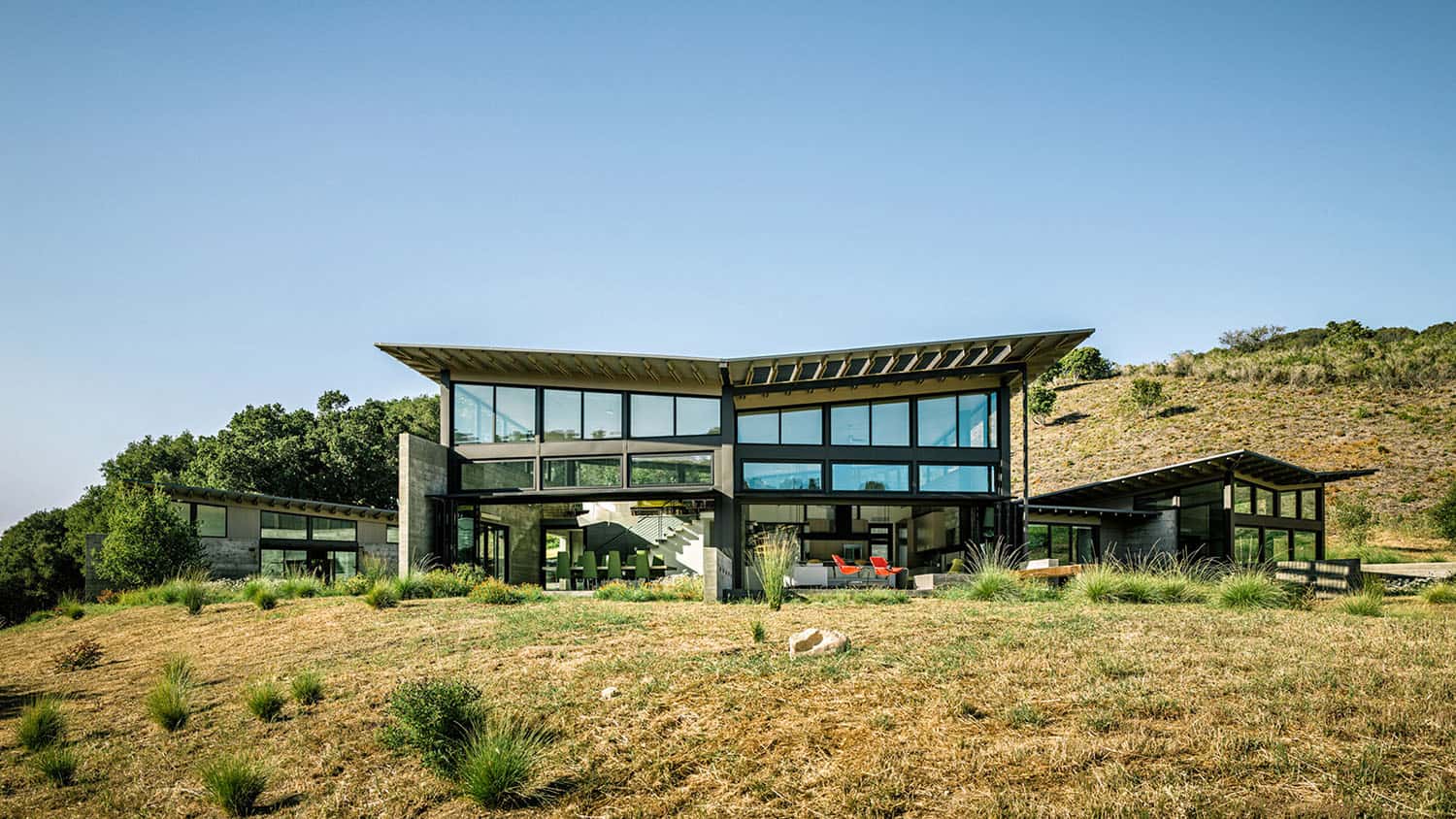
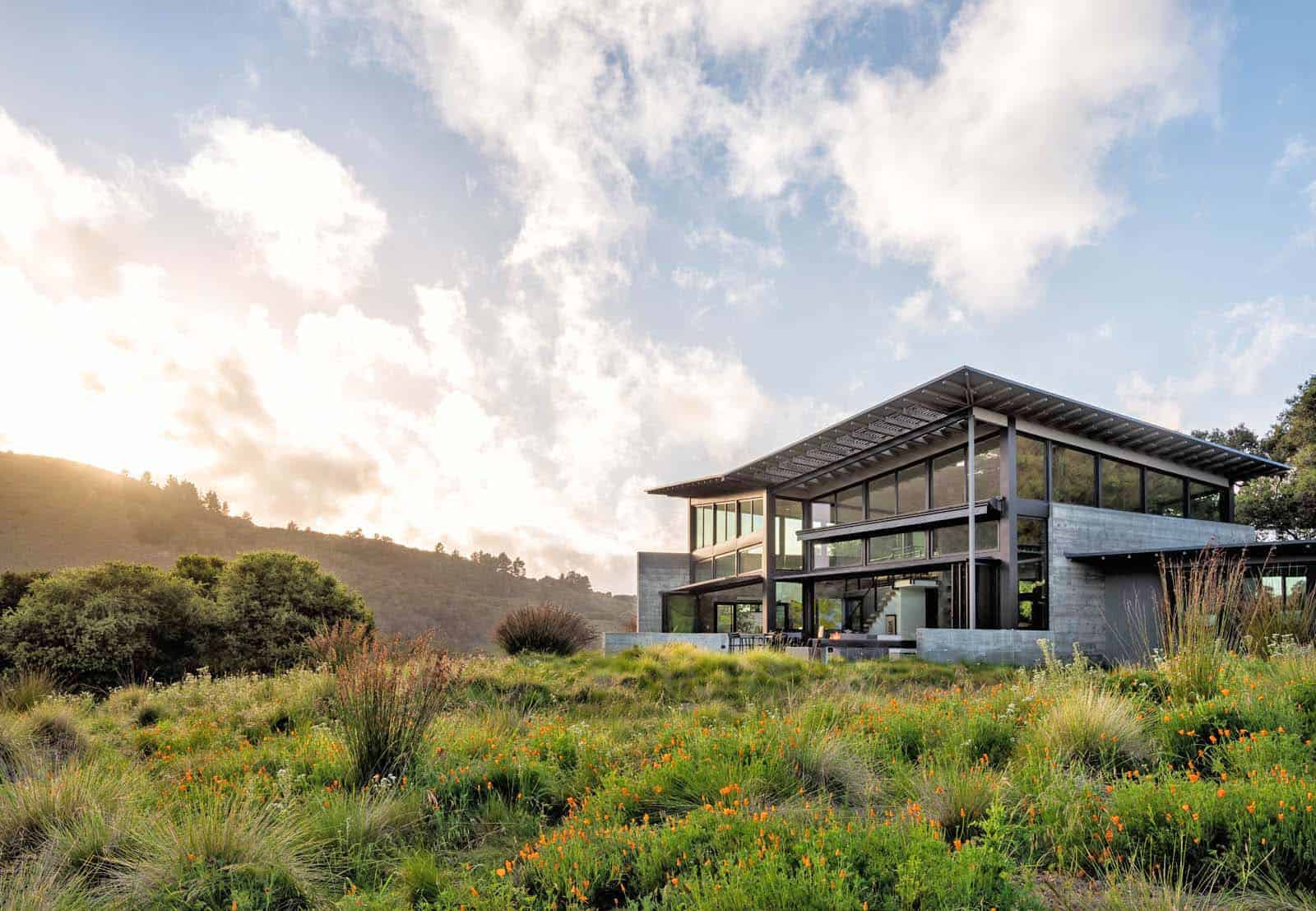
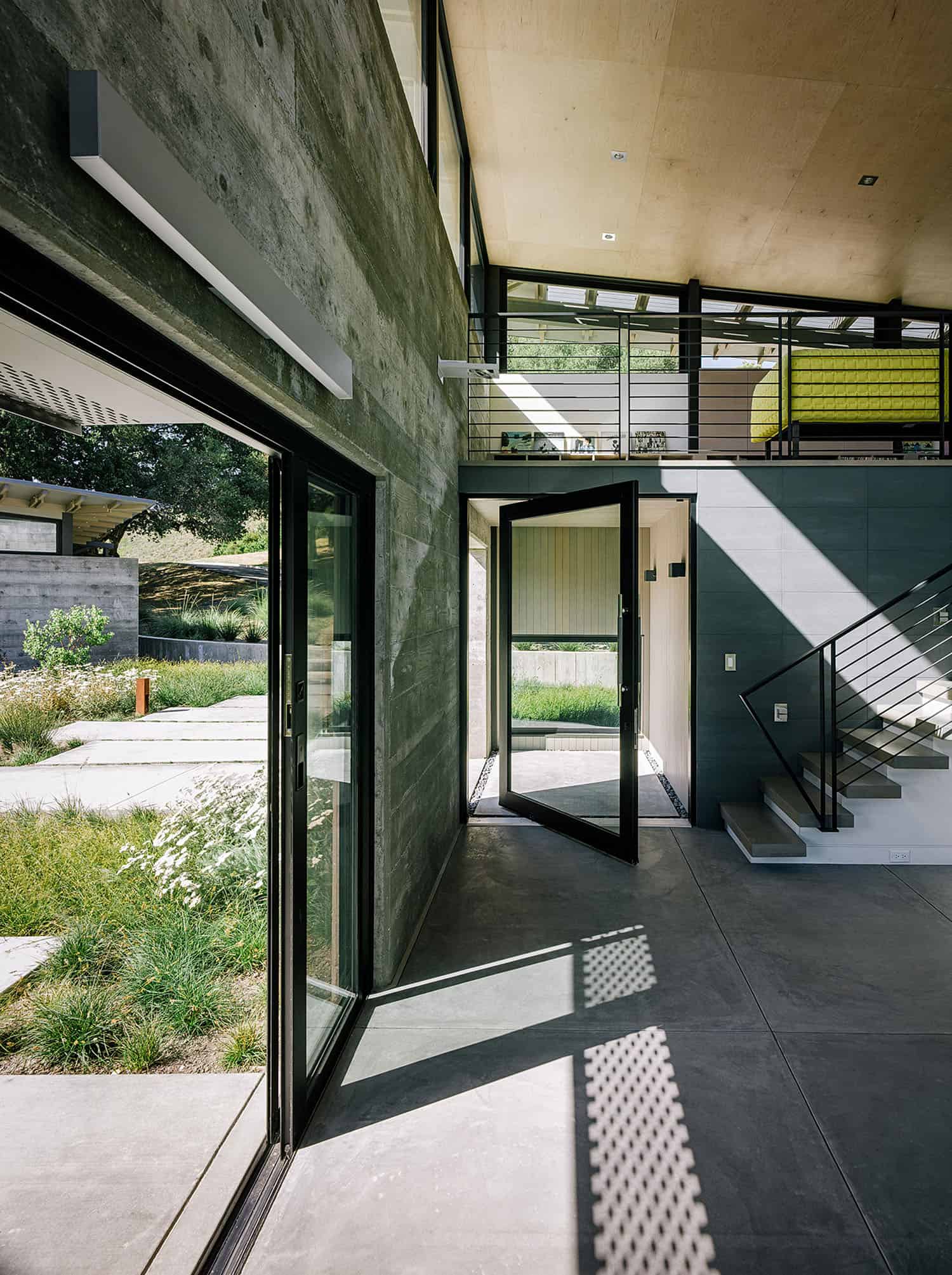
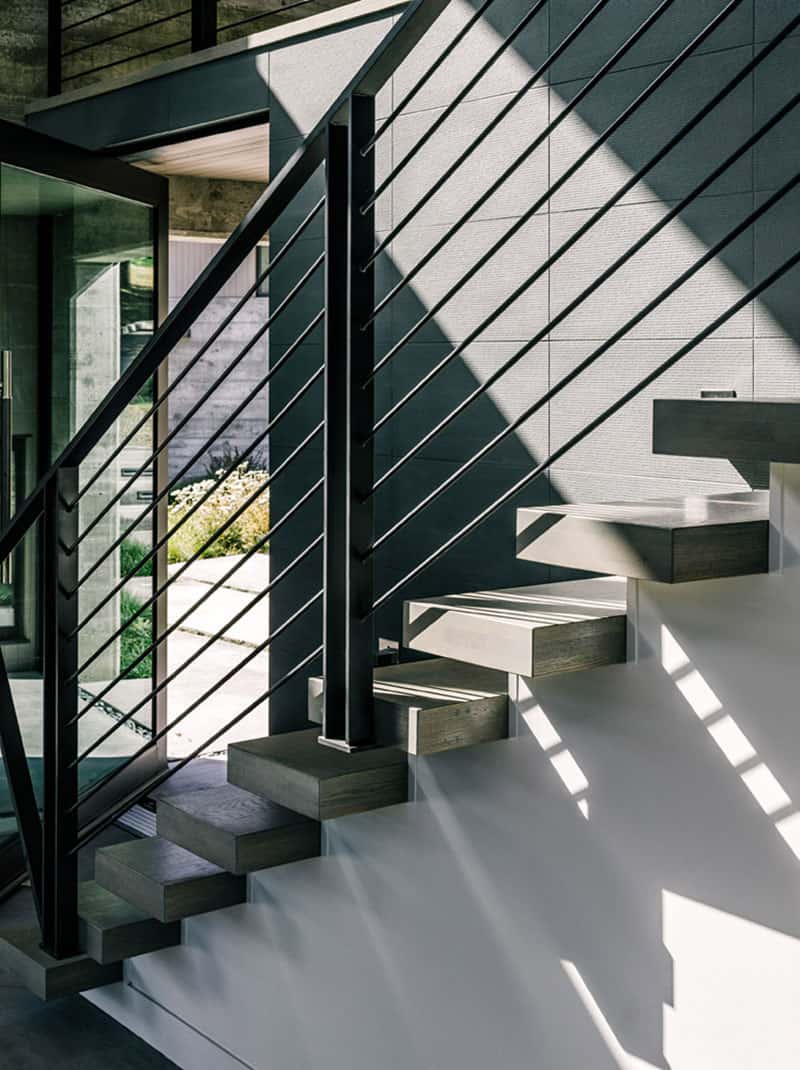
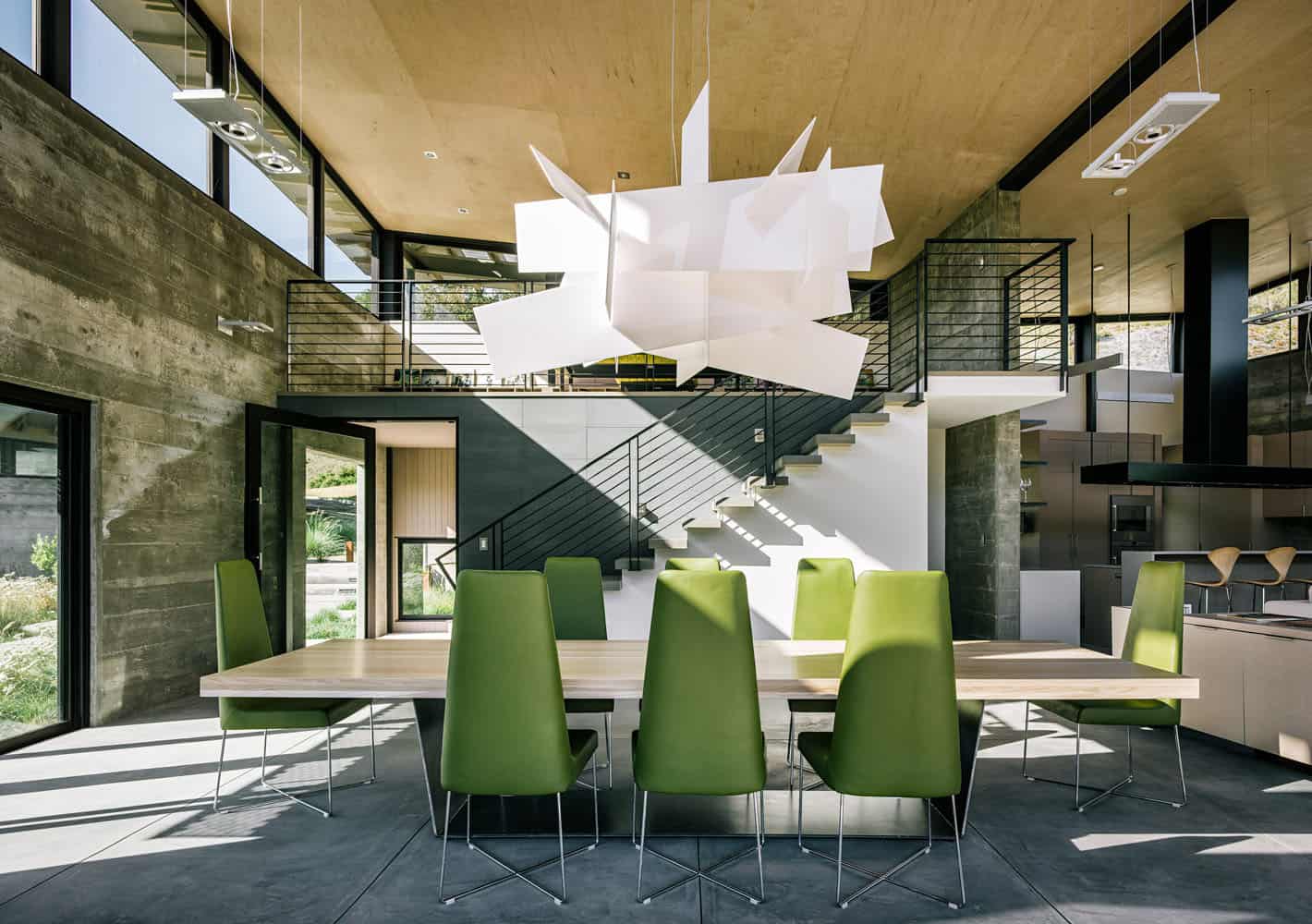


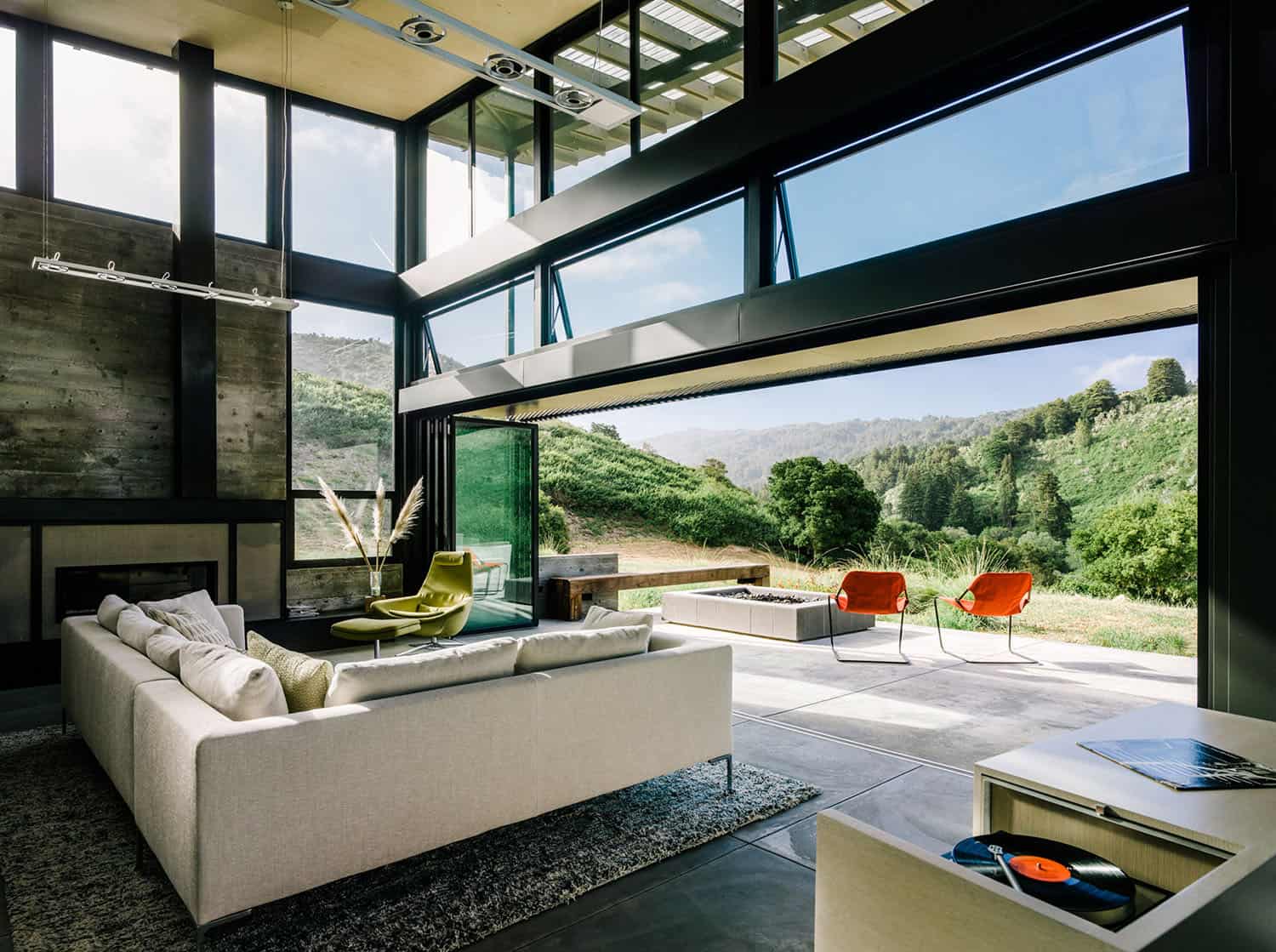
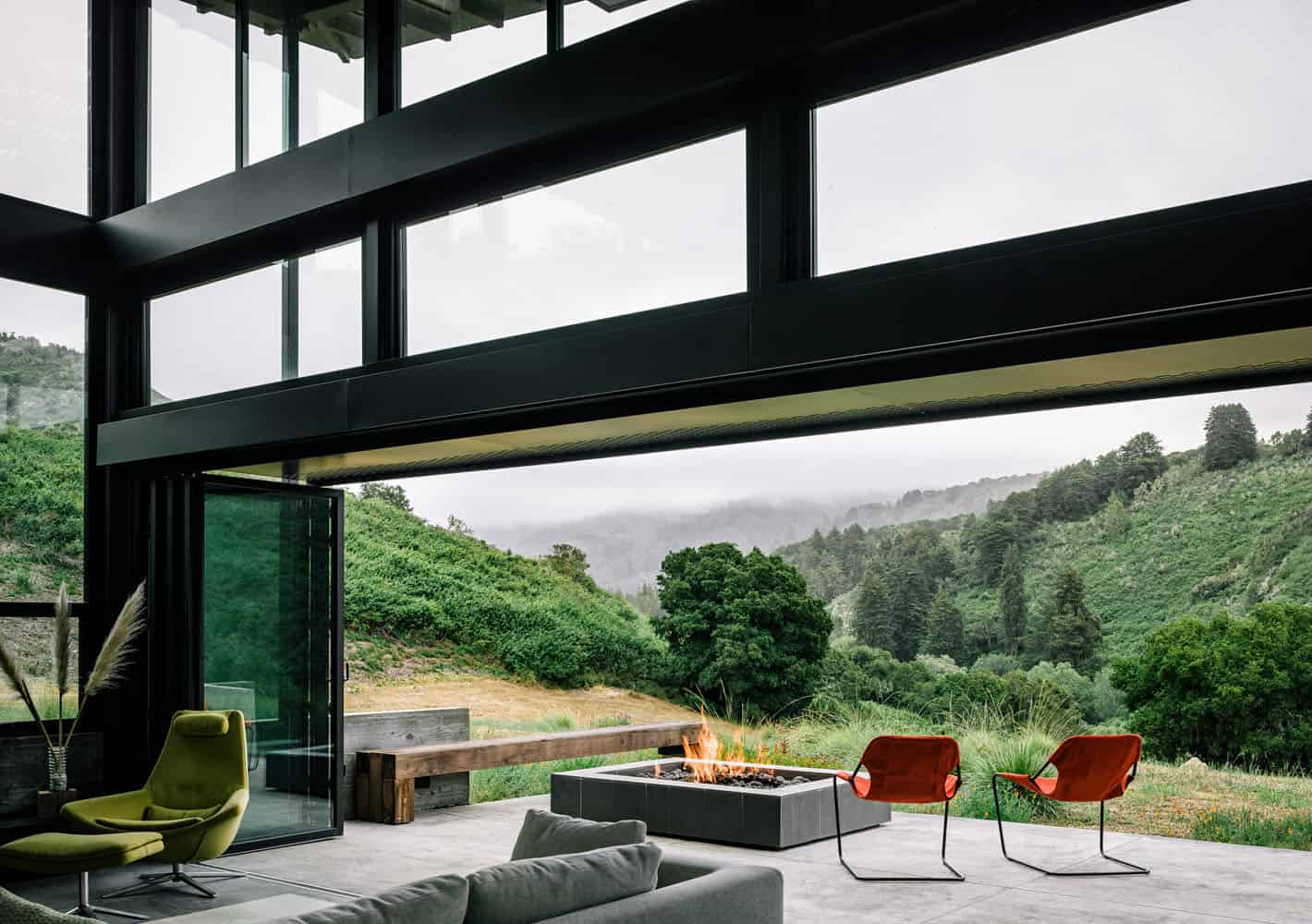
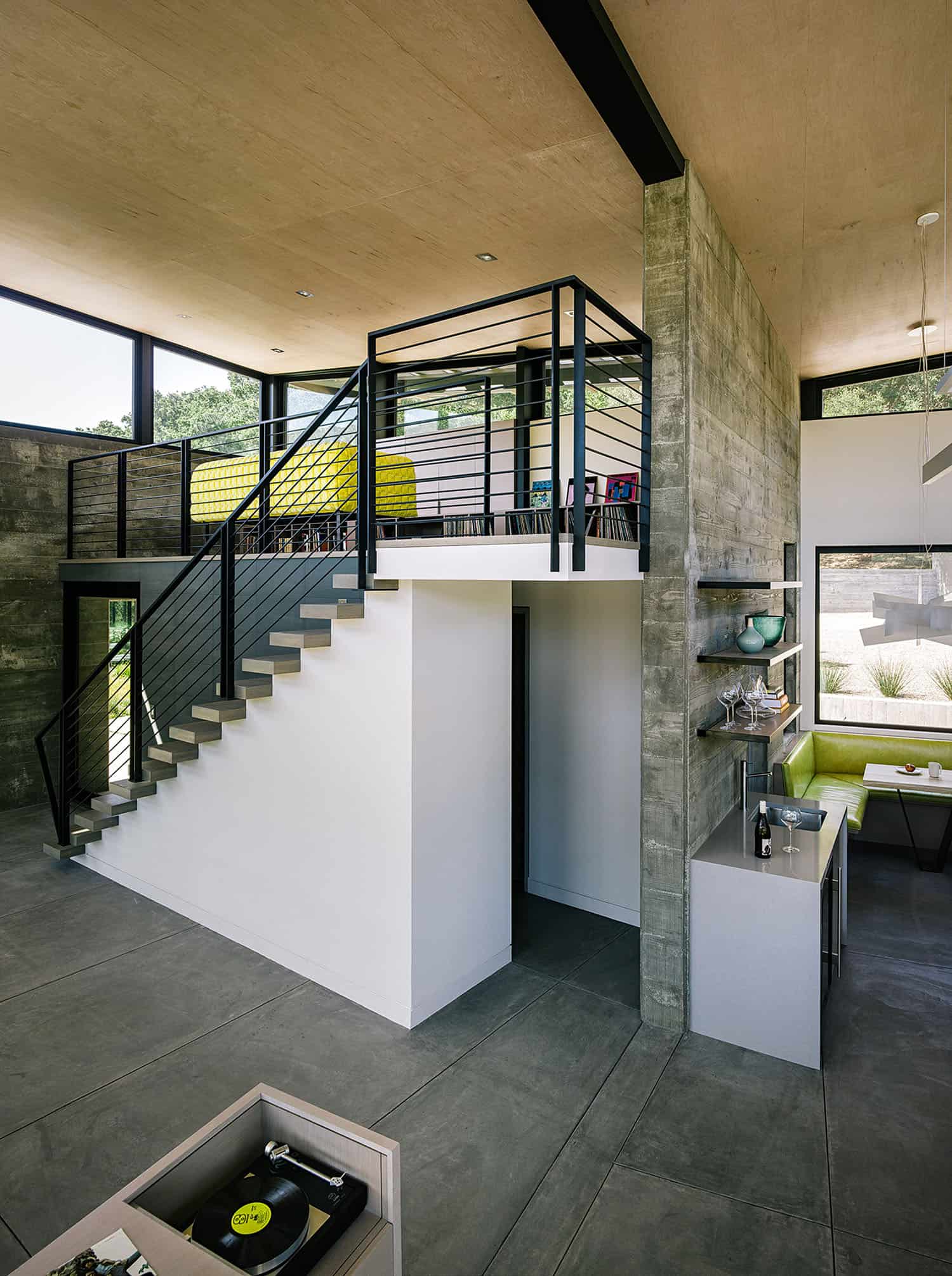
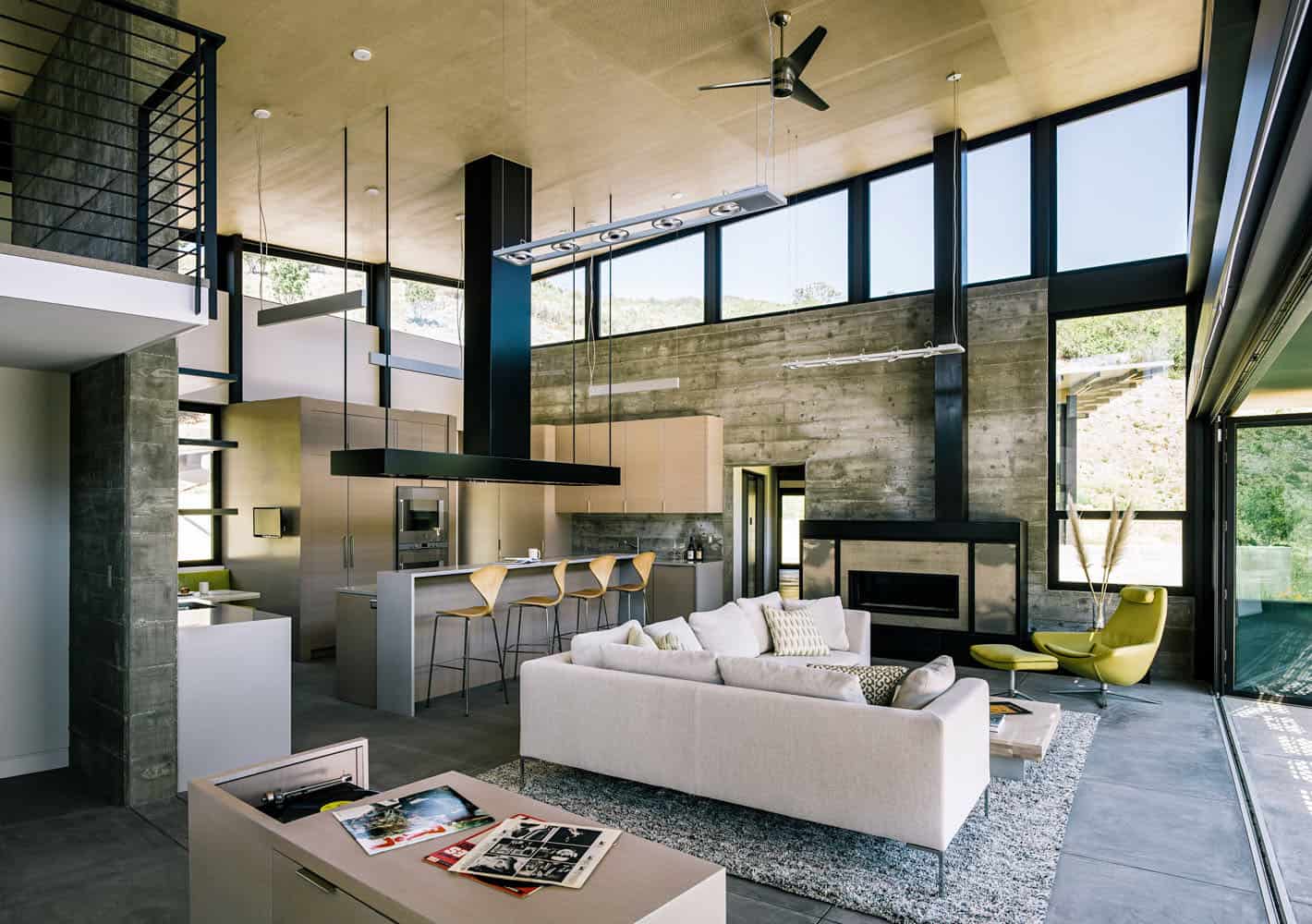
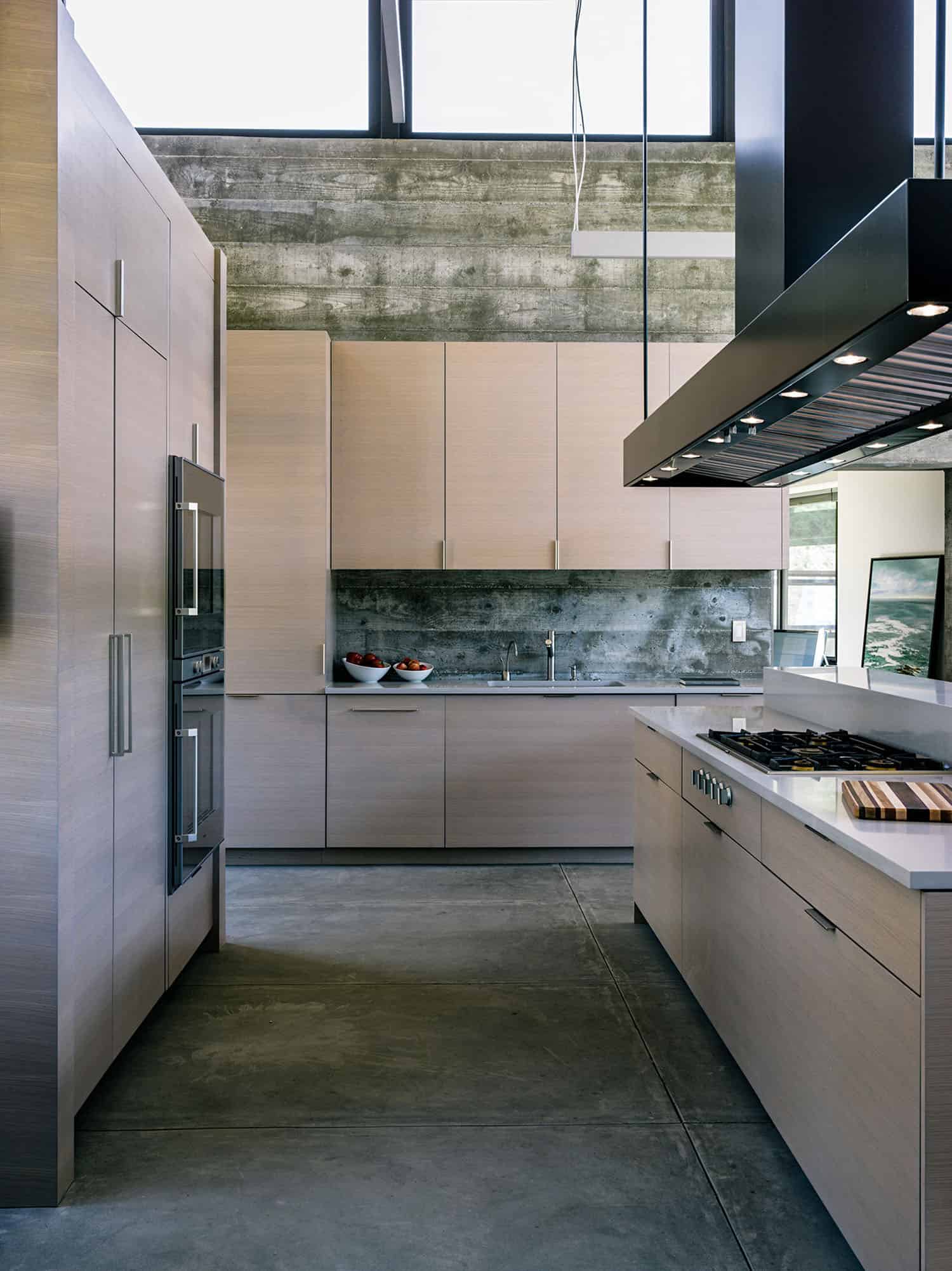
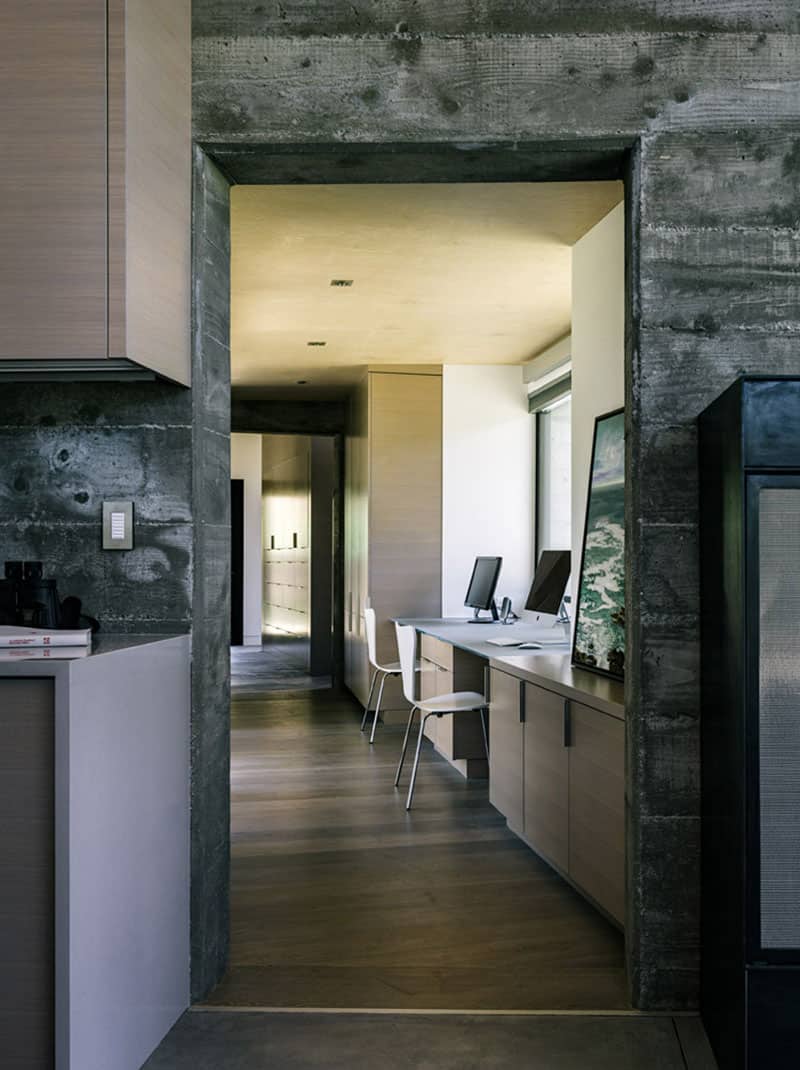
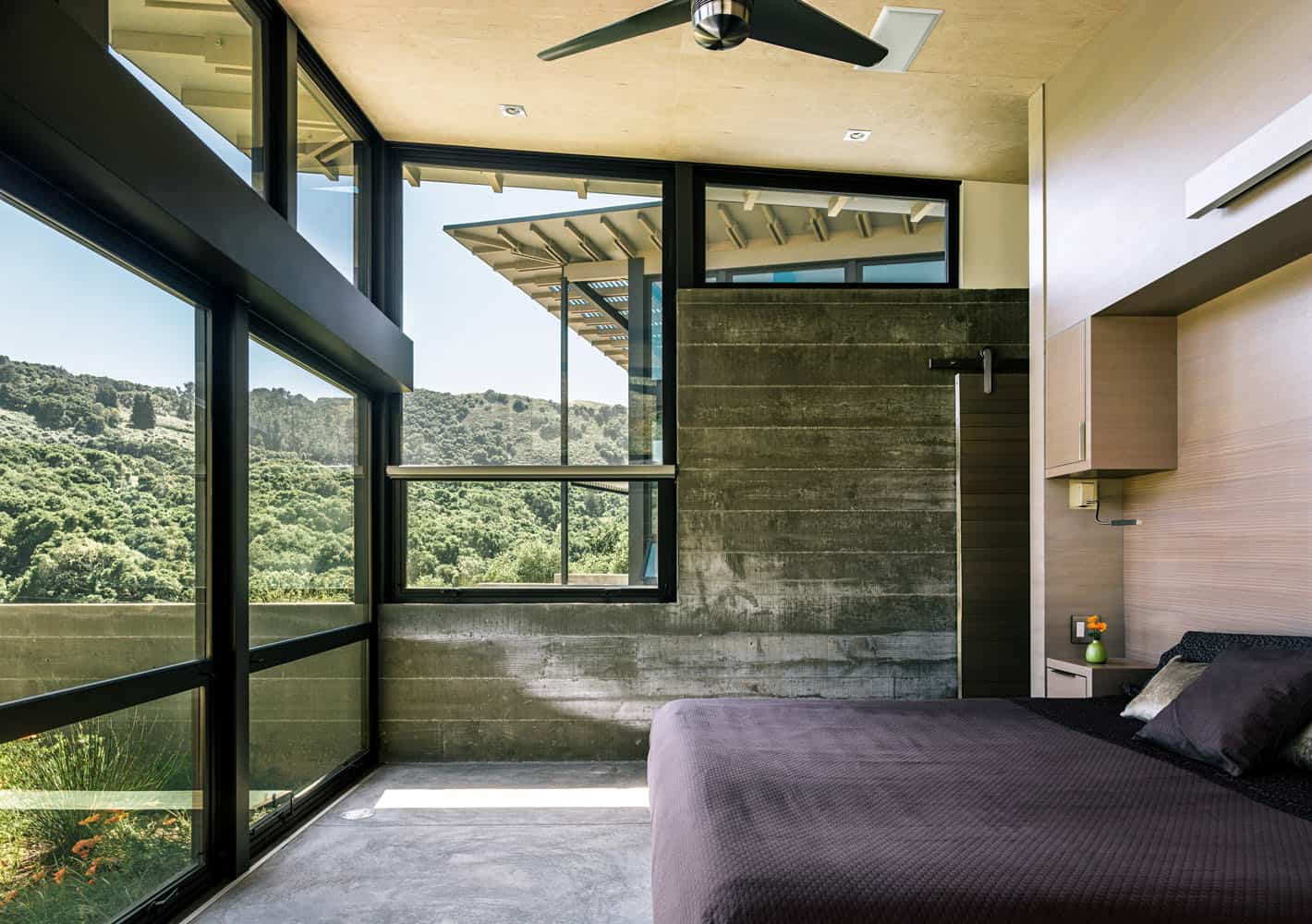

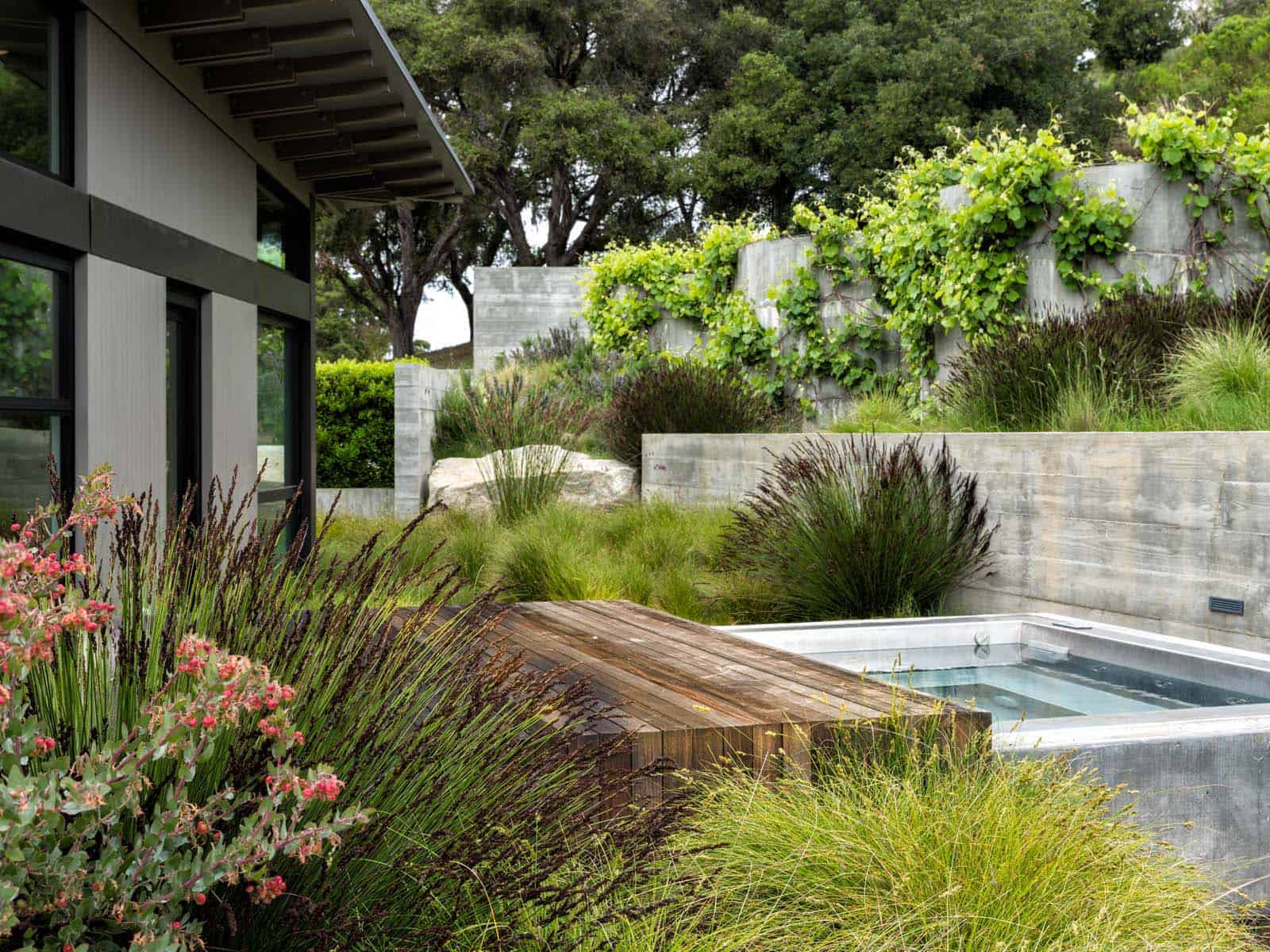

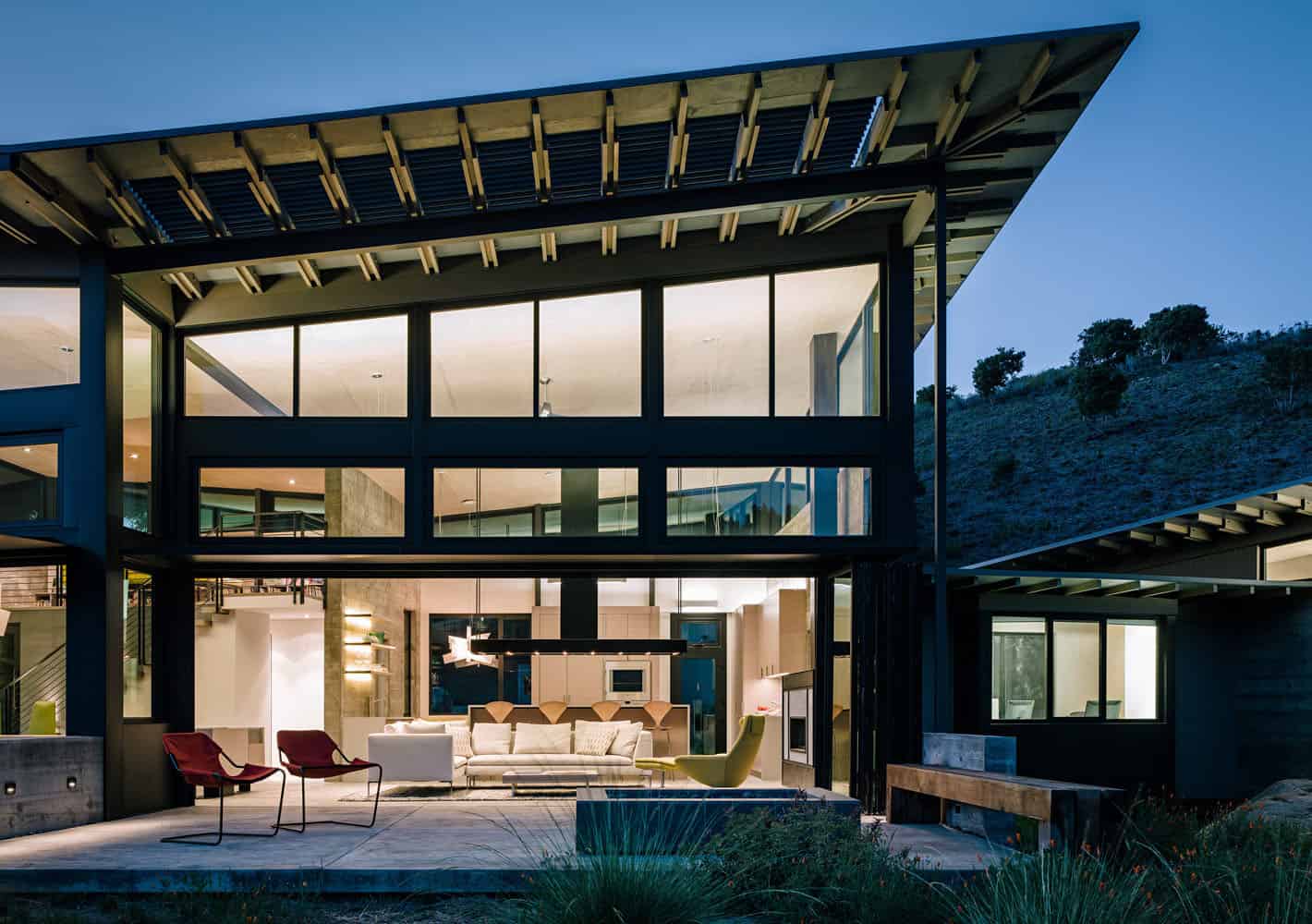
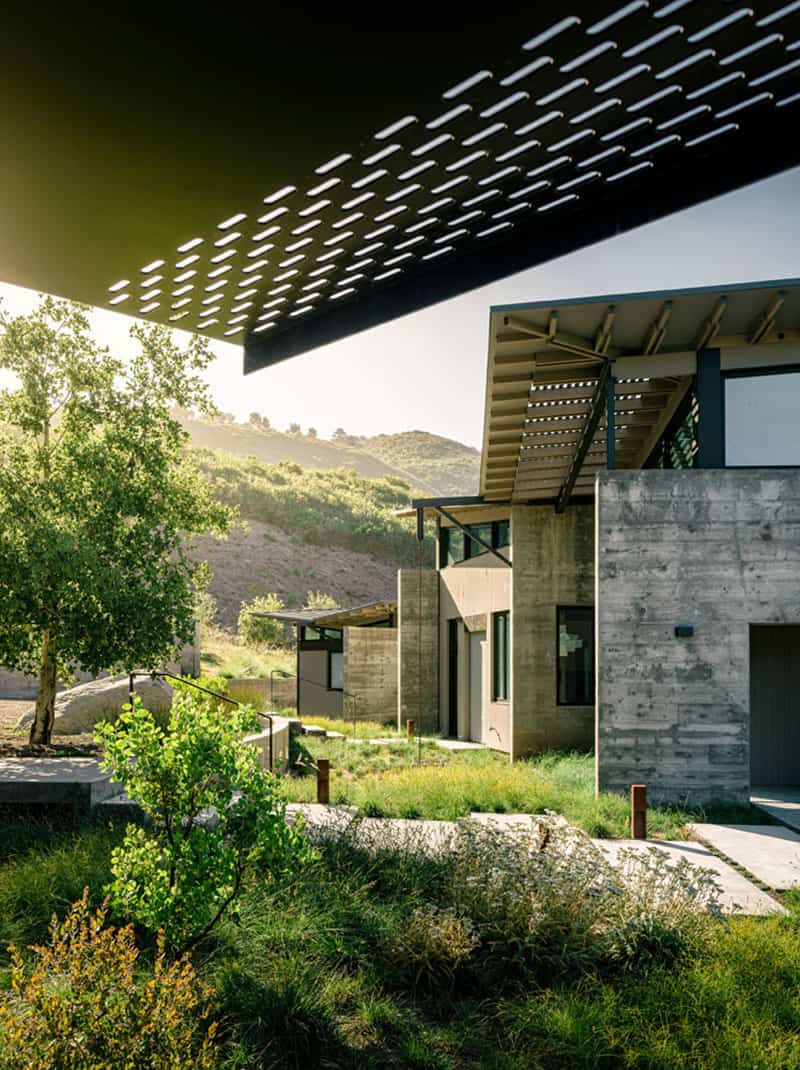

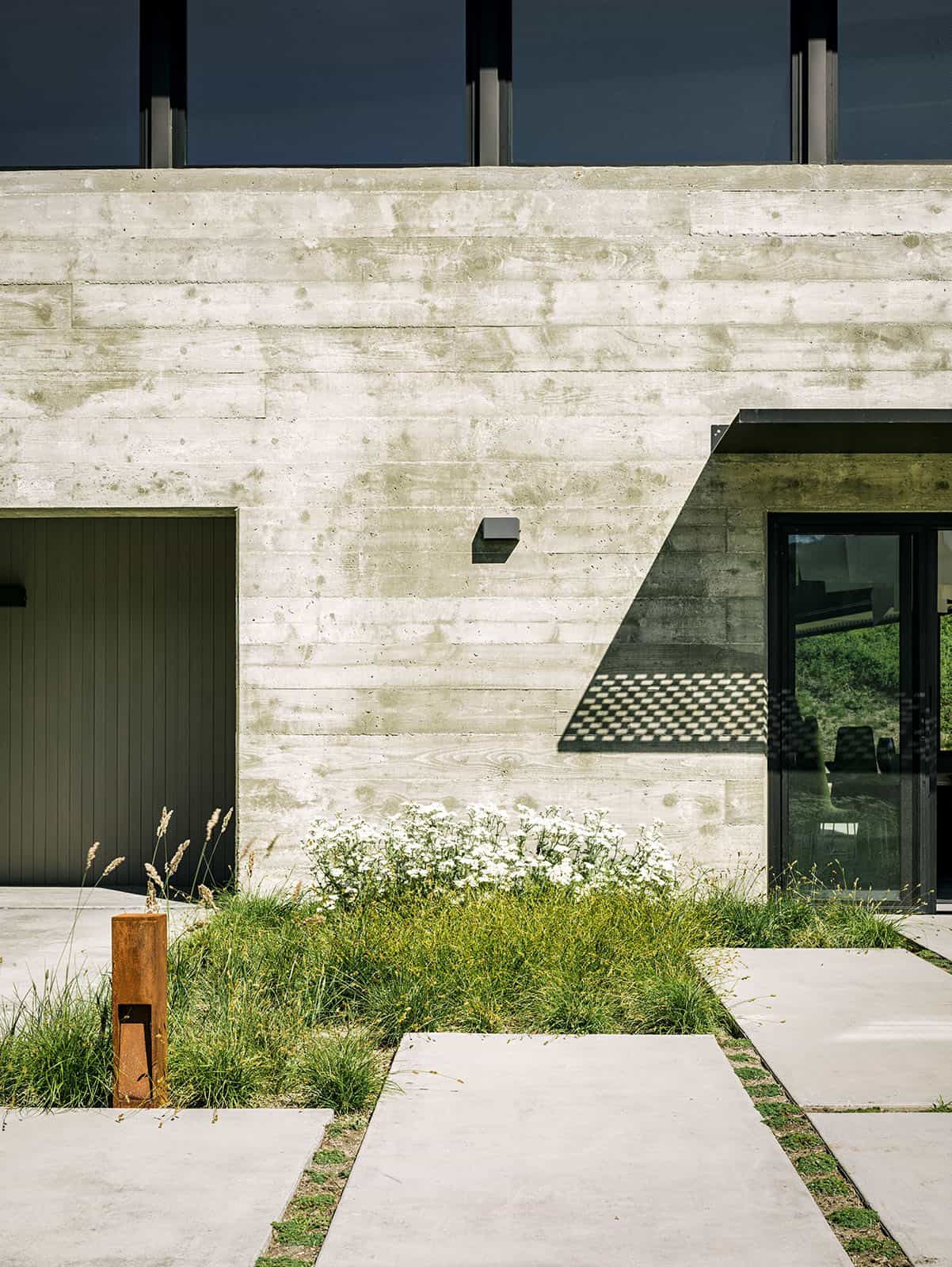
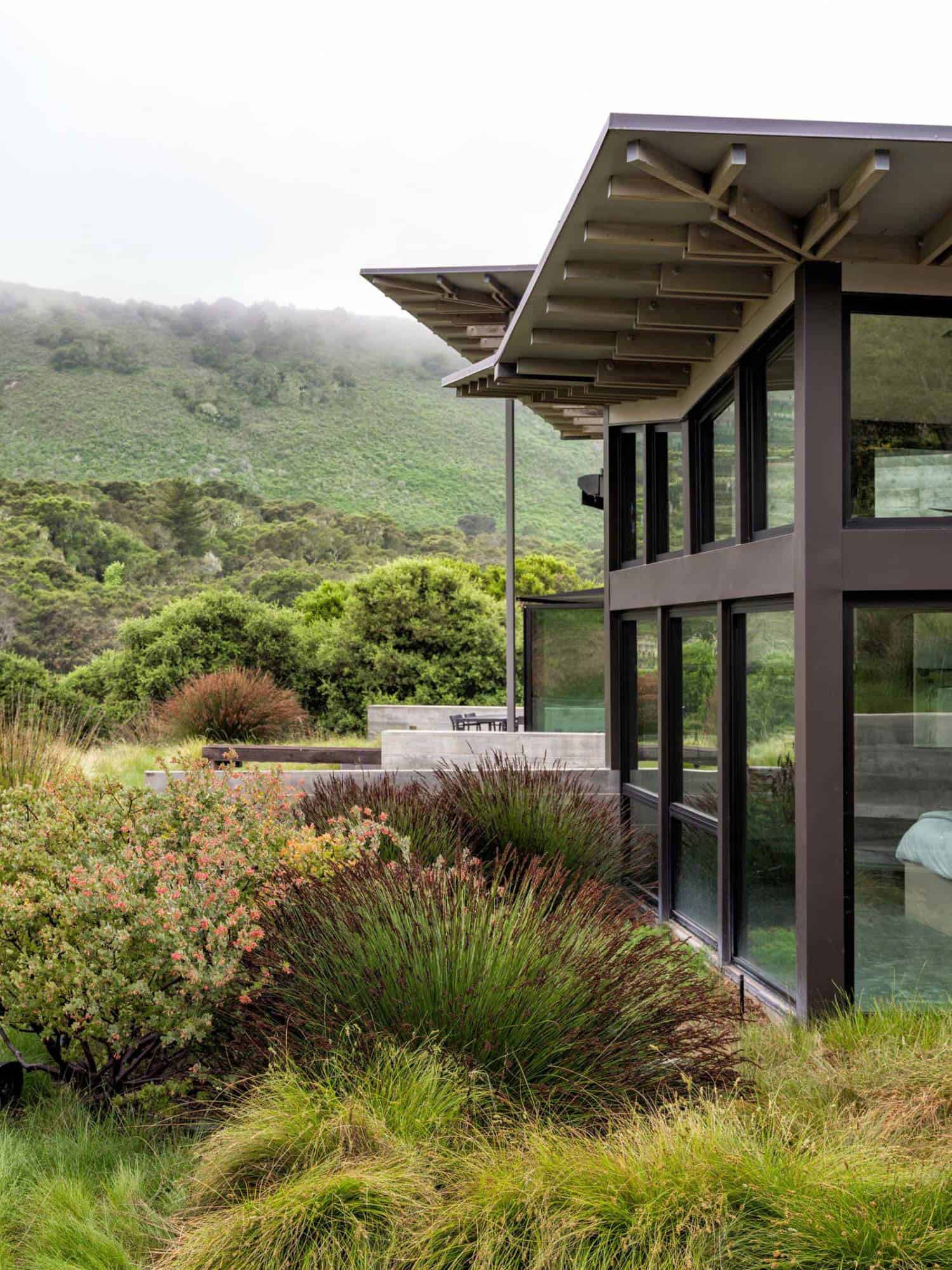
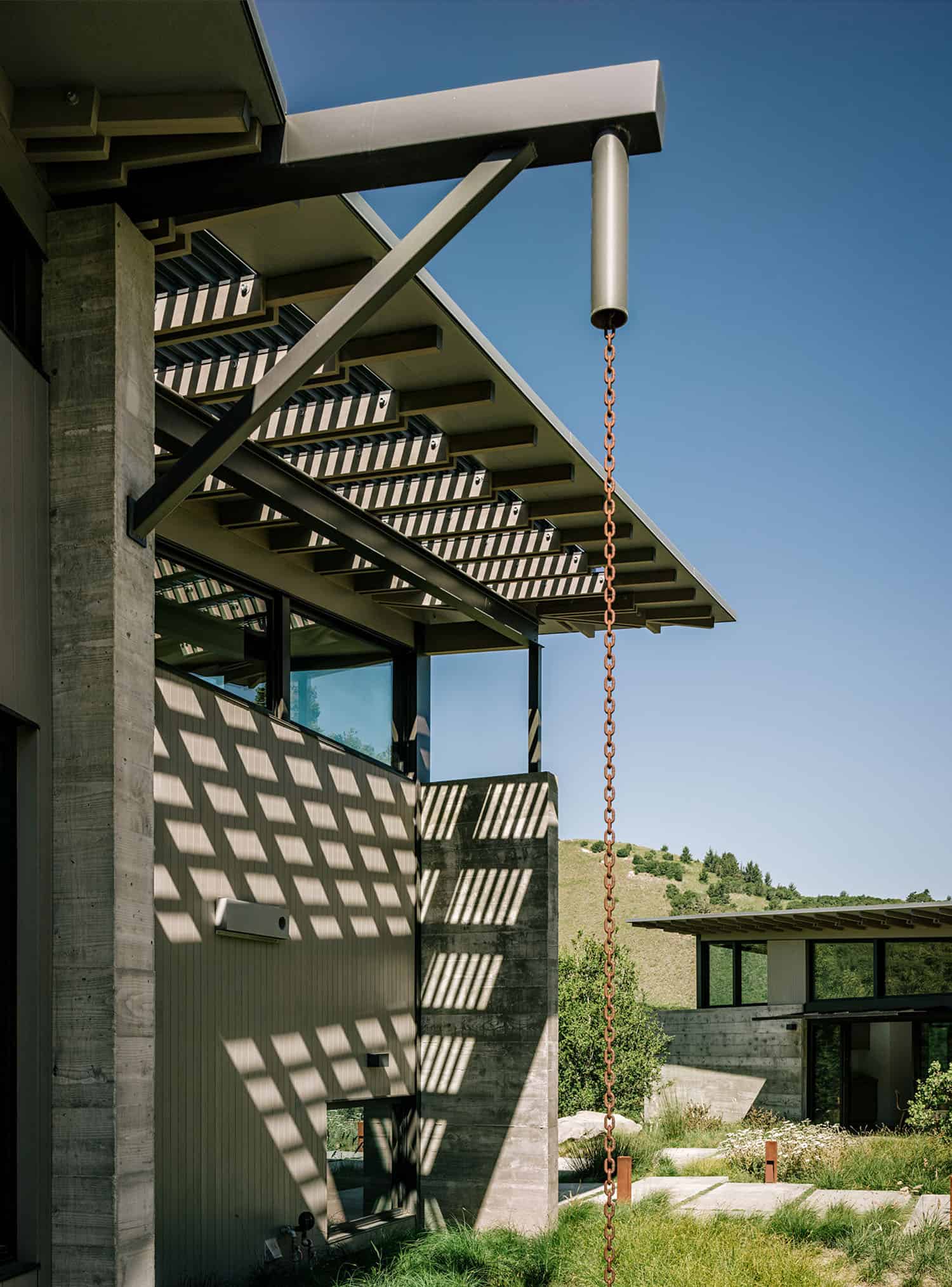
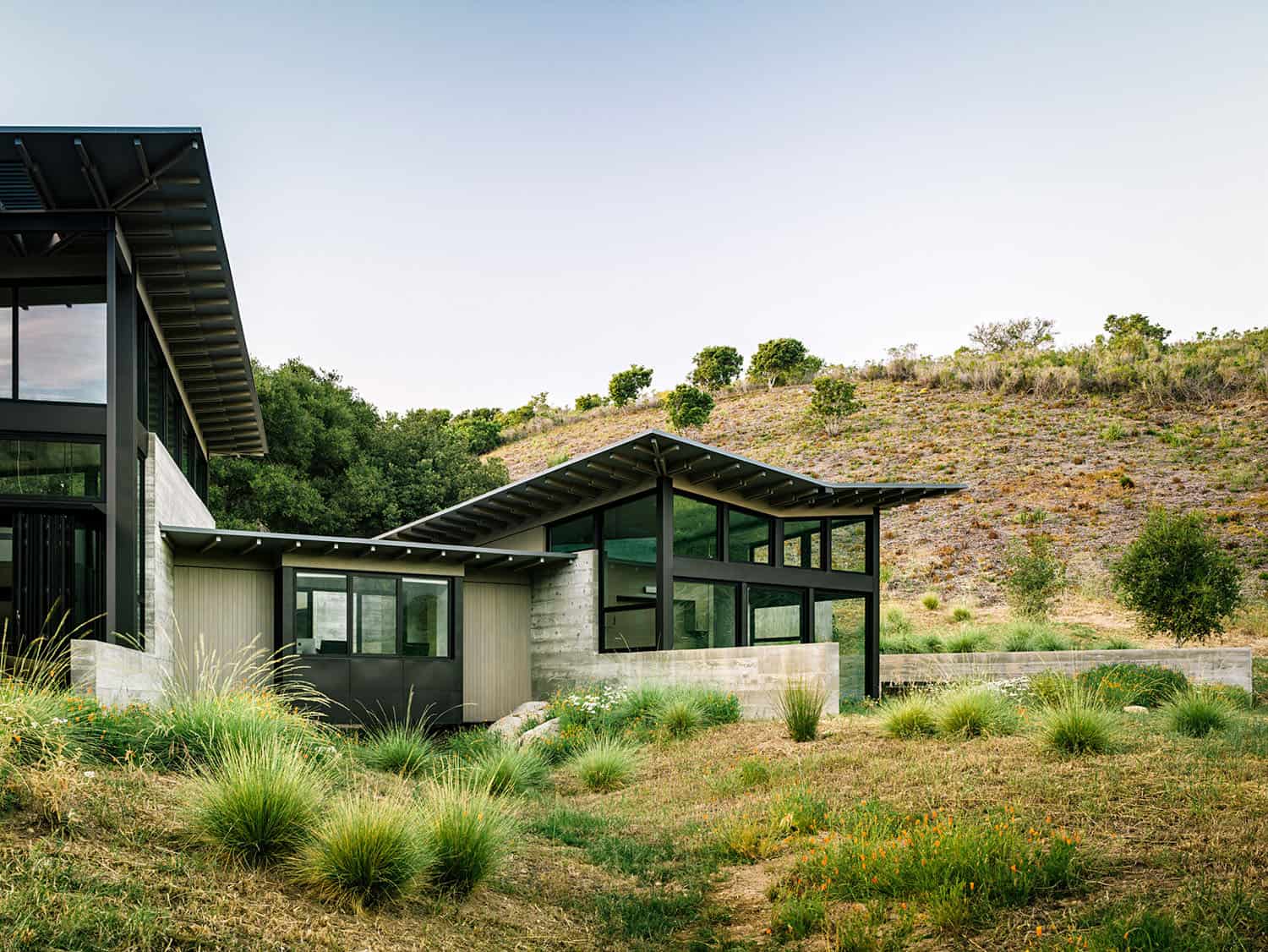
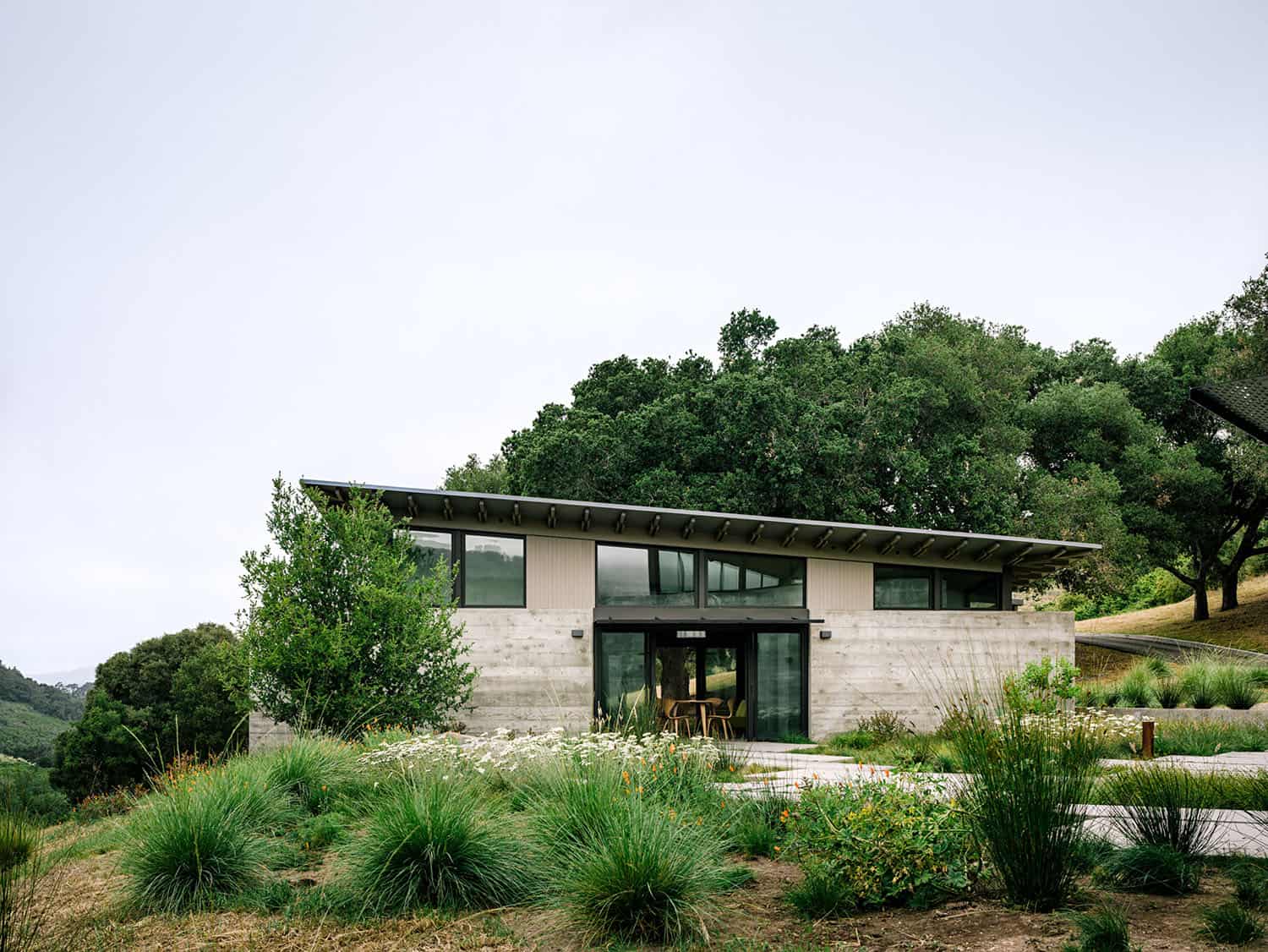
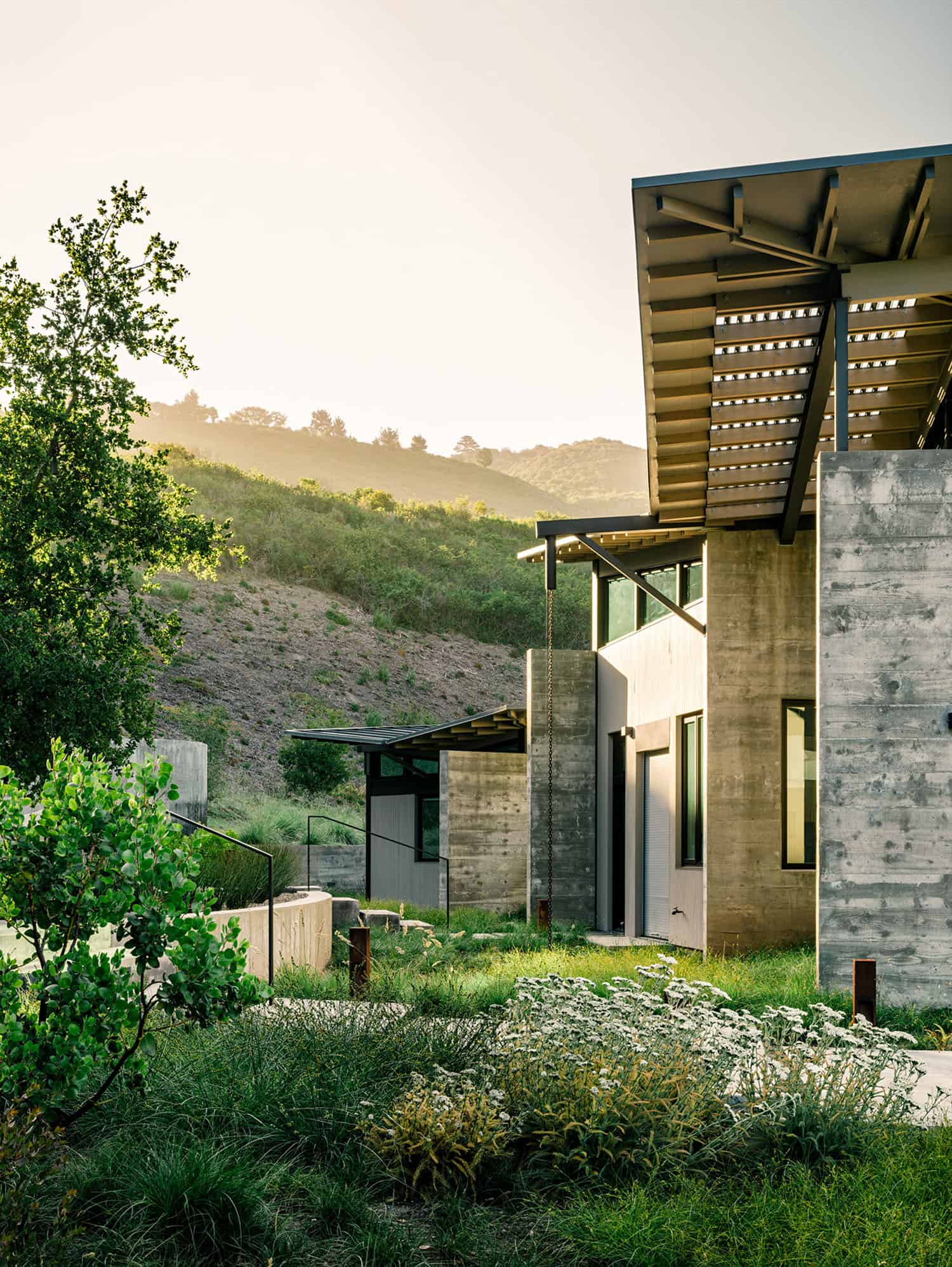
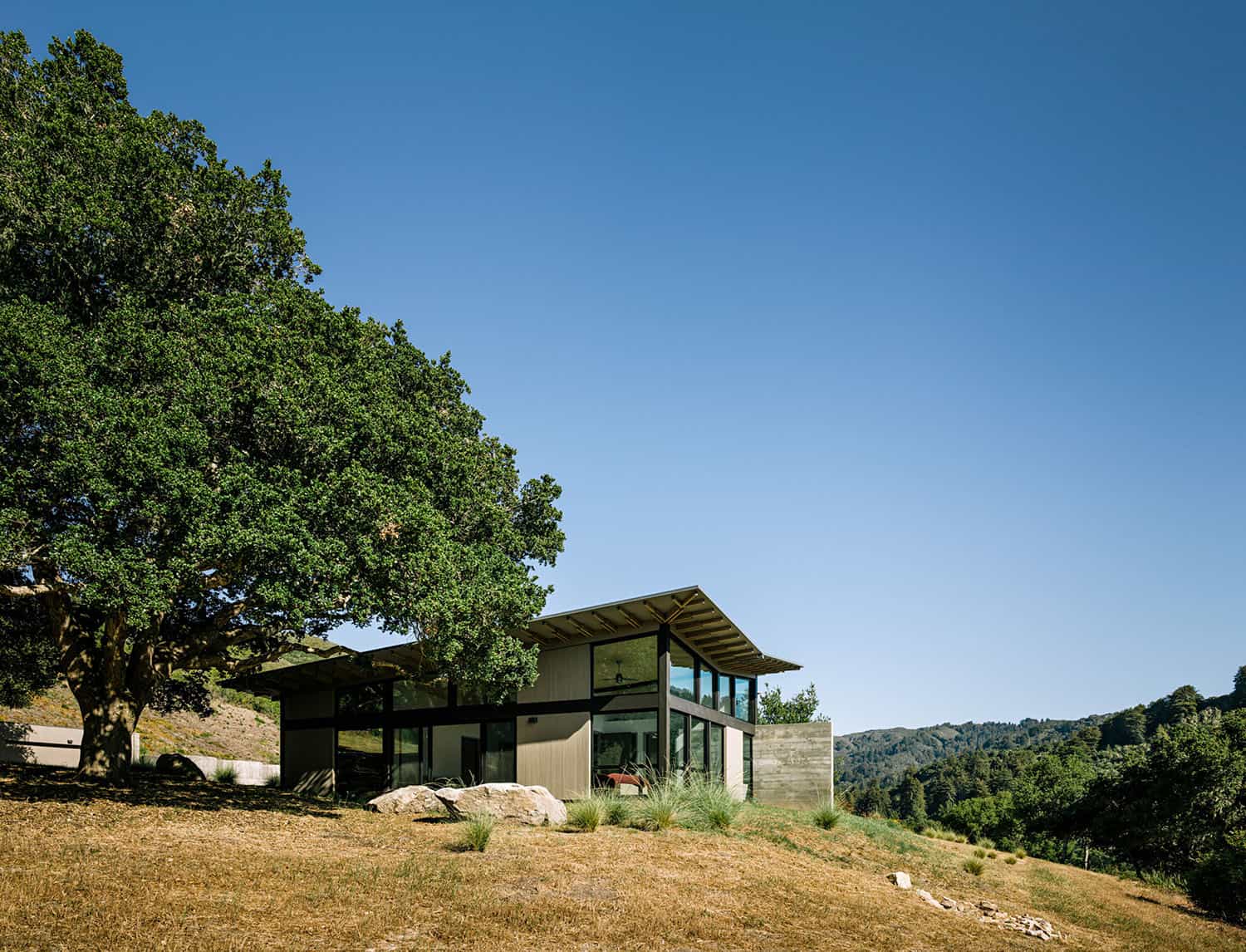
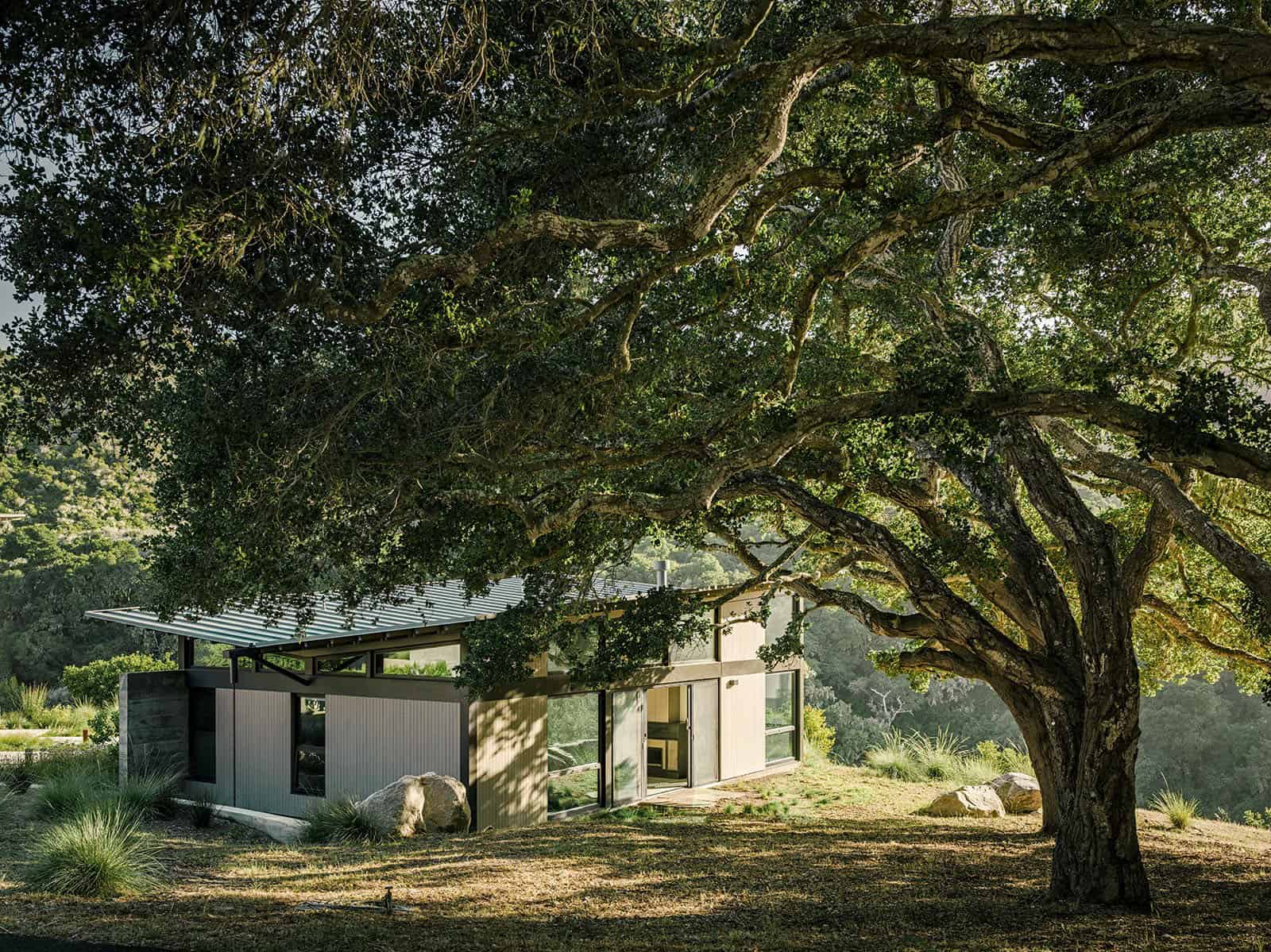
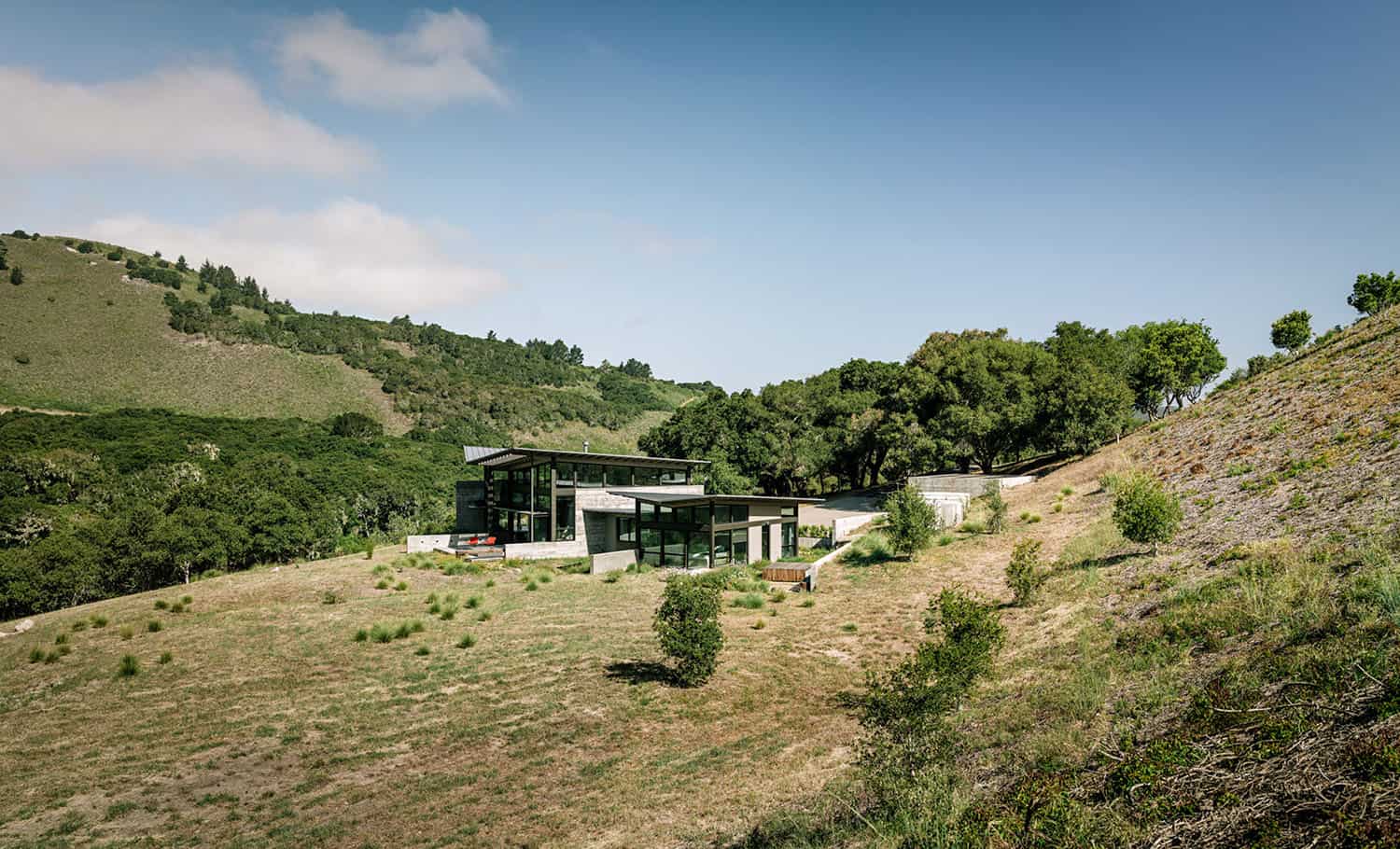
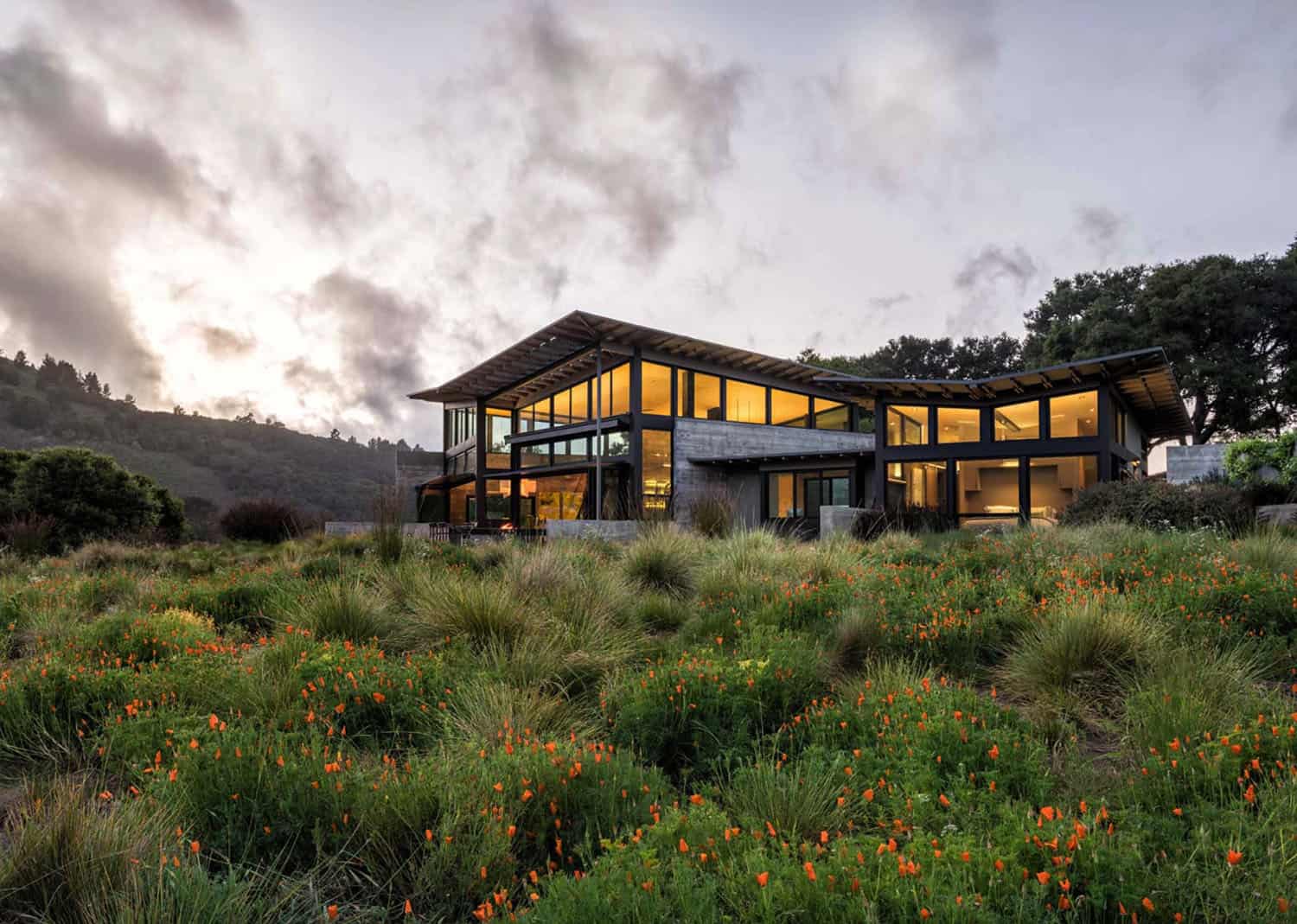

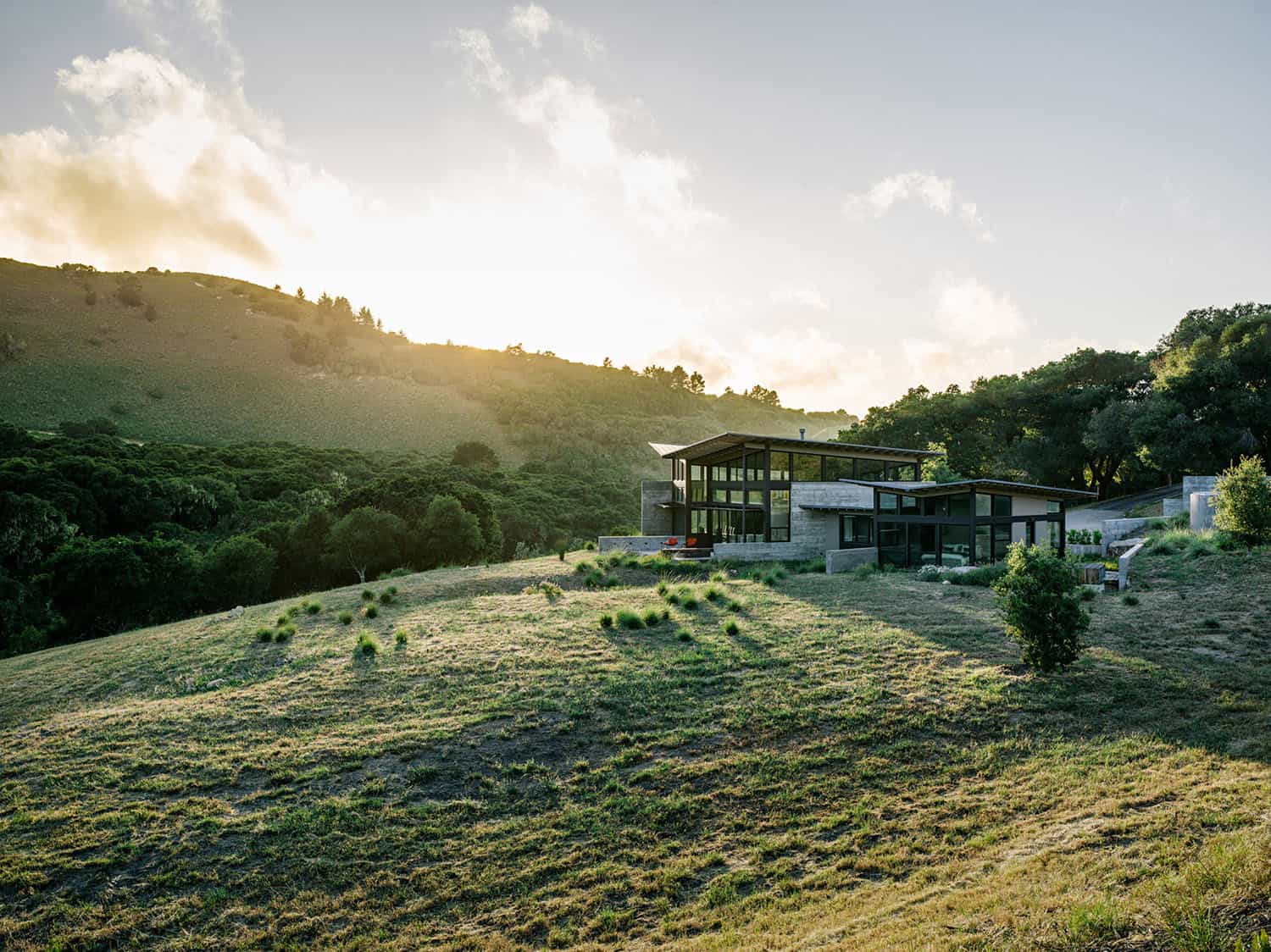

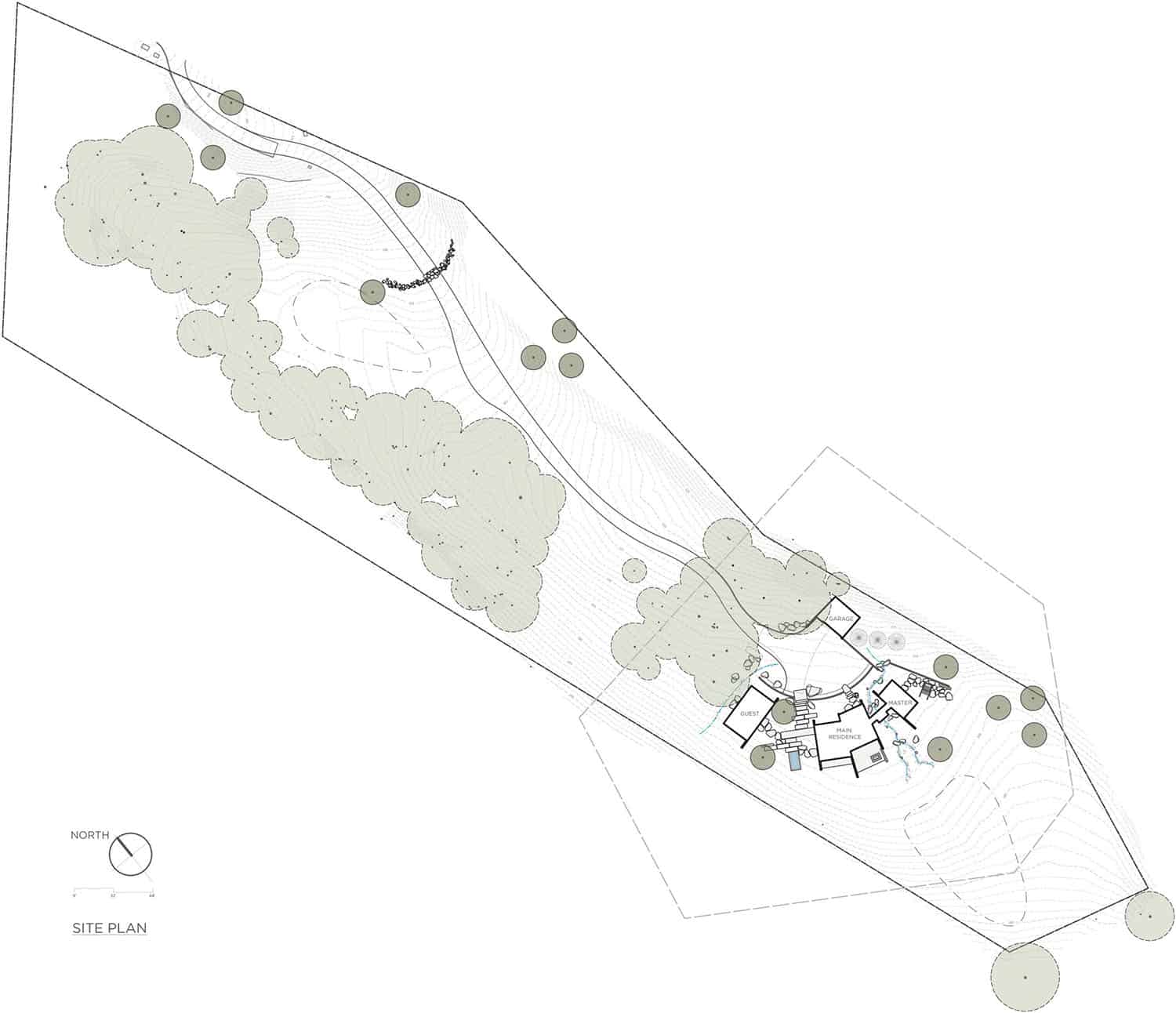
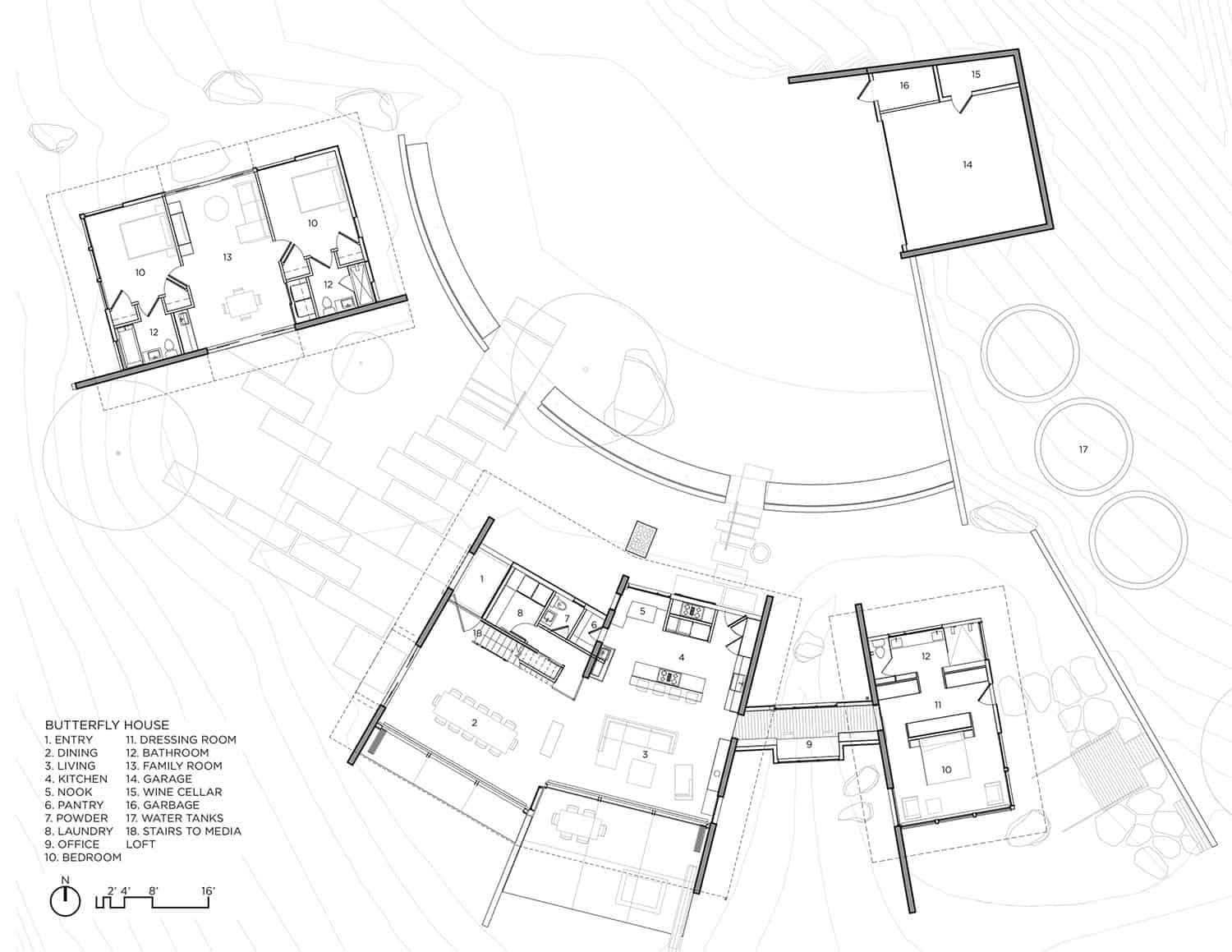

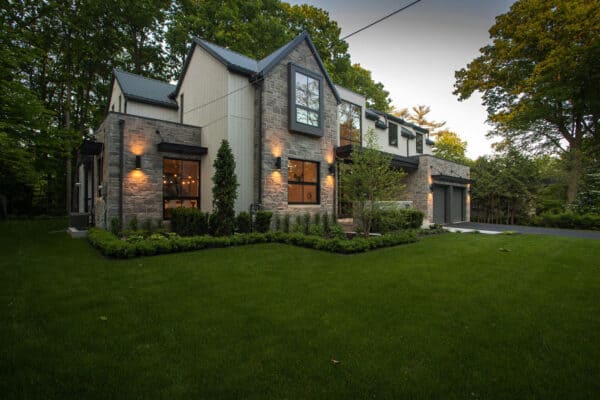
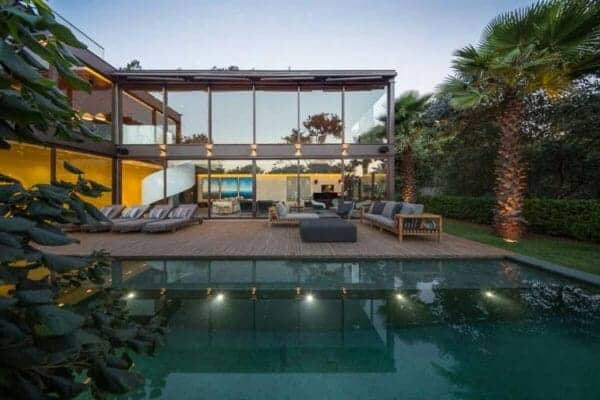


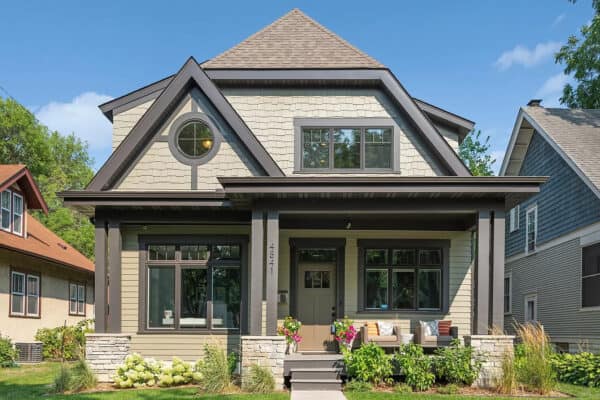

1 comment